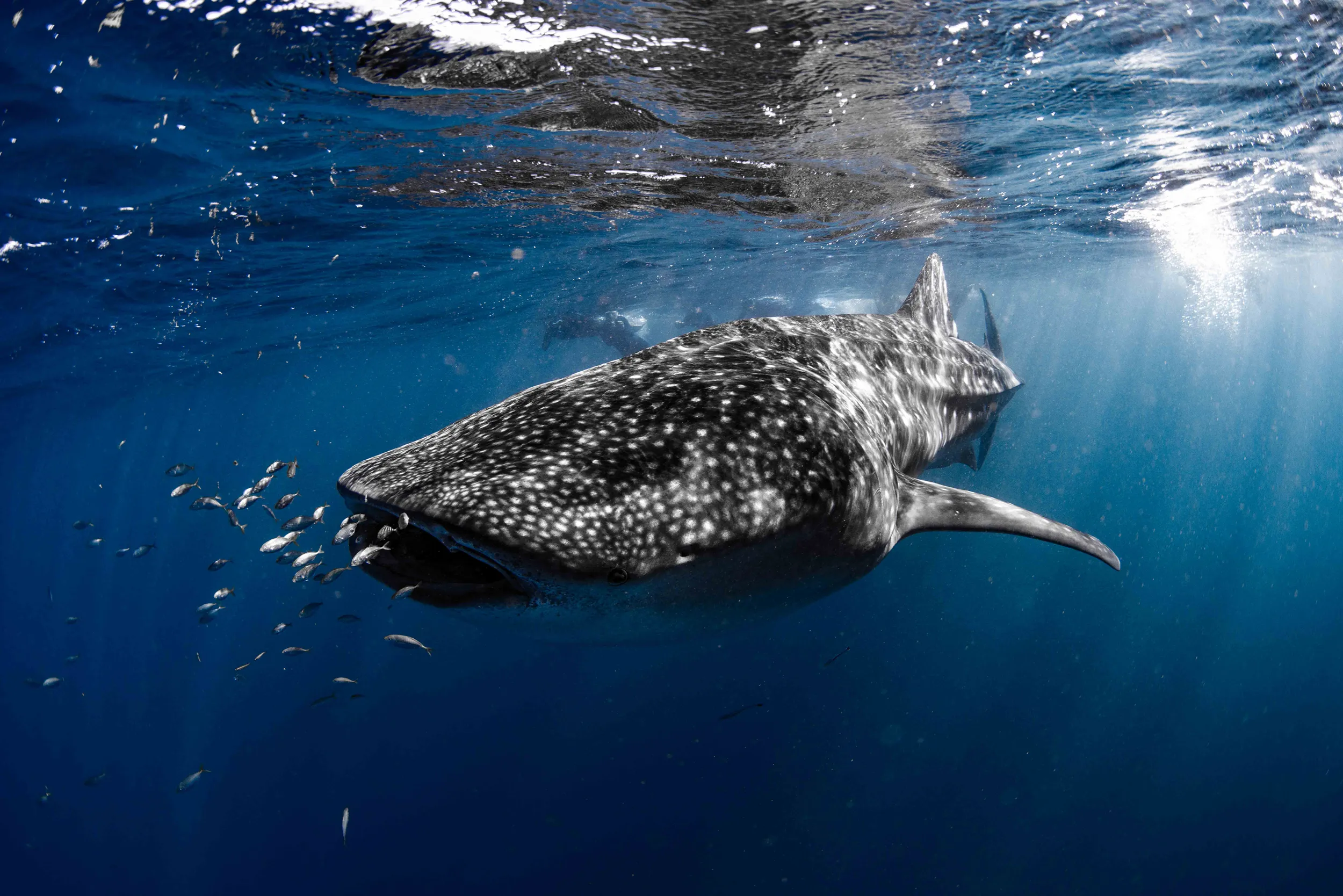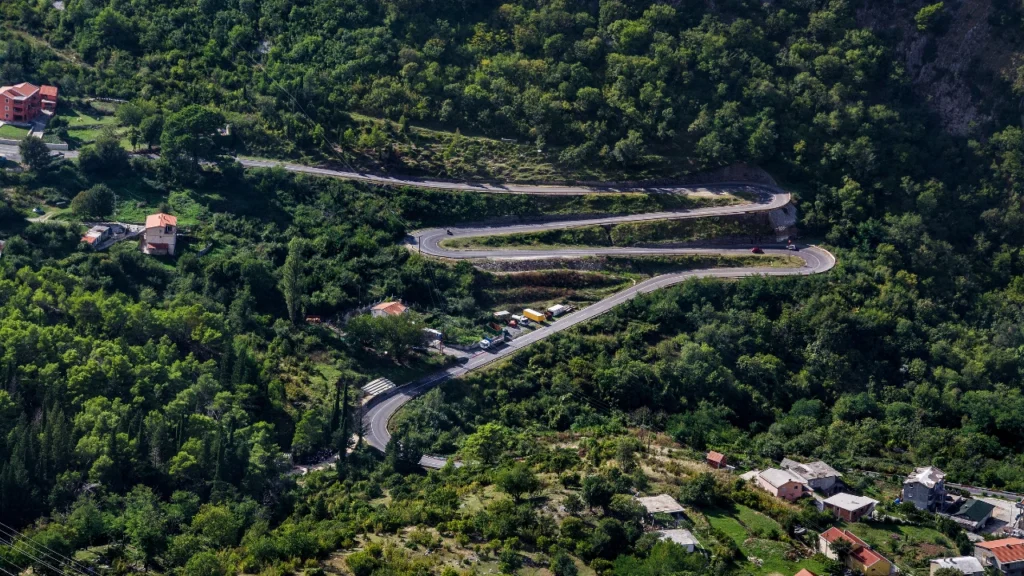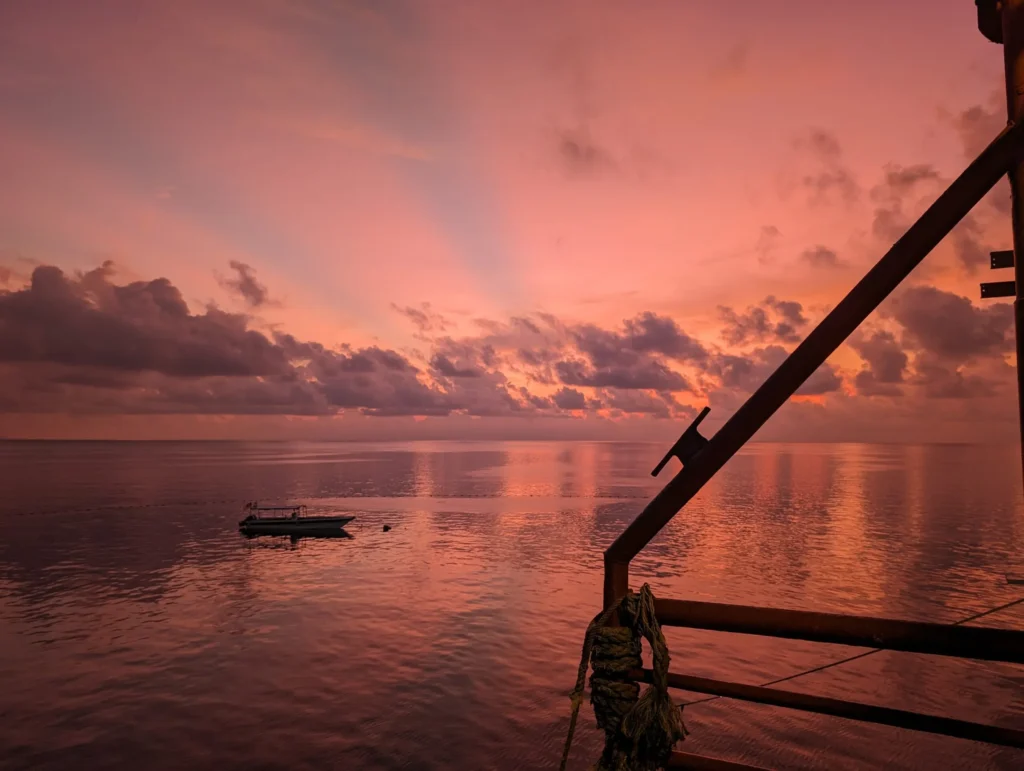I spent two weeks on a Western Australia road trip from Perth to Exmouth (and back) in a campervan, and it was one of my most bucket list-worthy trips to date.
Much like North America, Australia is the perfect destination for a road trip. And similarly to my year-long road trip around the United States, I severely underestimated the size of Australia. There was one day in particular when my ‘quick detour’ turned into a 500-kilometer, all-day adventure.
So this is to say, two weeks in Western Australia definitely isn’t enough! However, if you’re short on time (like we were), this two-week Western Australia road trip itinerary should help you plan your own bucket list adventure.
In this post, you can steal my exact two-week Western Australia road trip itinerary, with all the campsites we stayed at, beaches and snorkeling spots we loved, and tips to make your trip even better than ours.
If you’ve been trying to plan a road trip from Perth to Exmouth, this is the guide you need.
Let’s drive right in. 🚐
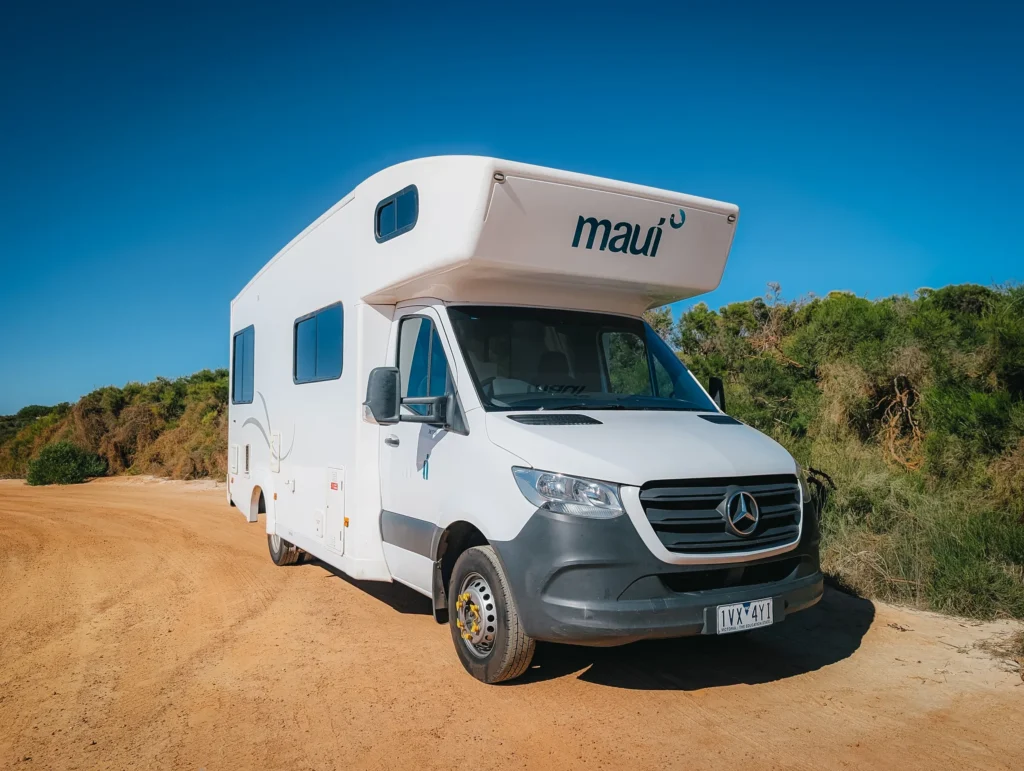
Justyn’s Quick Western Australia Road Trip Tips
🚐 Camper Rental: Book your campervan rental through Campstar. They compare prices from the top rental companies around the world to make sure that you always get the best price and the most comprehensive insurance.
🏕️ Campsites: Wild camping is not the same in Australia as it is on the West Coast of the US. But there are plenty of paid campgrounds (that are actually affordable) and rest areas where you can sleep for a night! For campsites in Australia, download the WikiCamps app.
🇦🇺 Phone Data: If you’re going to get an Australian SIM card, make sure it’s Telstra. Download the My Telstra App and purchase an eSIM. It’s super easy to do, and Telstra has the best coverage where you’ll be going.
(My sister-in-law was using a SIM that offered ‘wholesale’ Telstra coverage, and it did not work where our full Telstra SIMs worked almost everywhere)
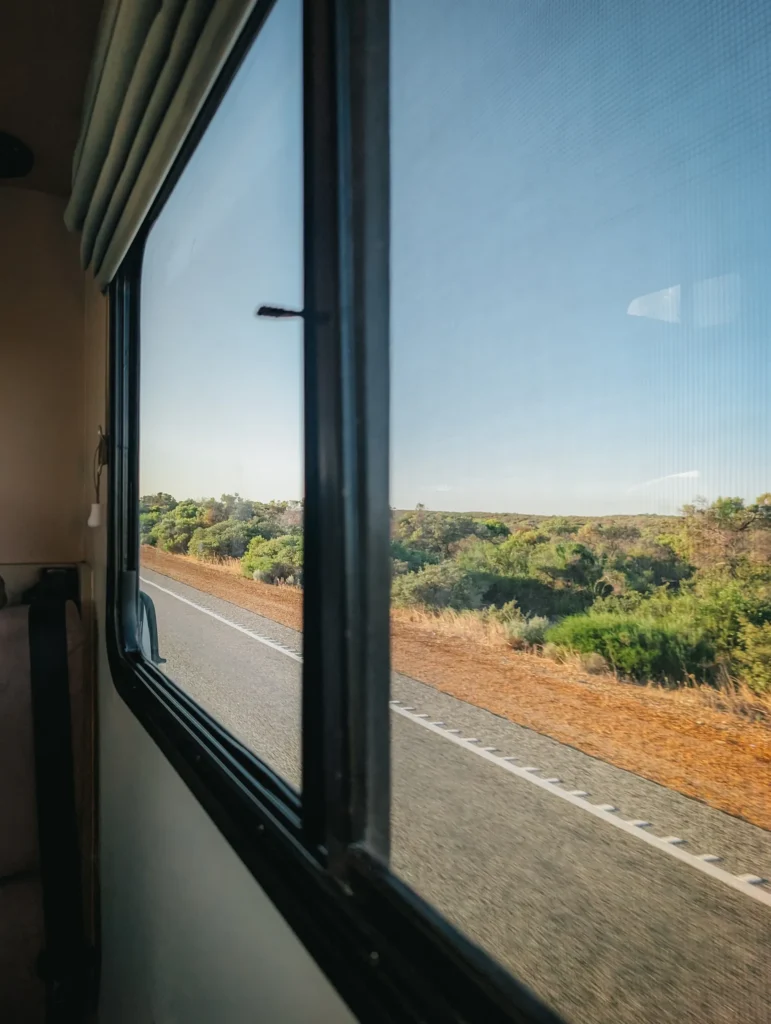
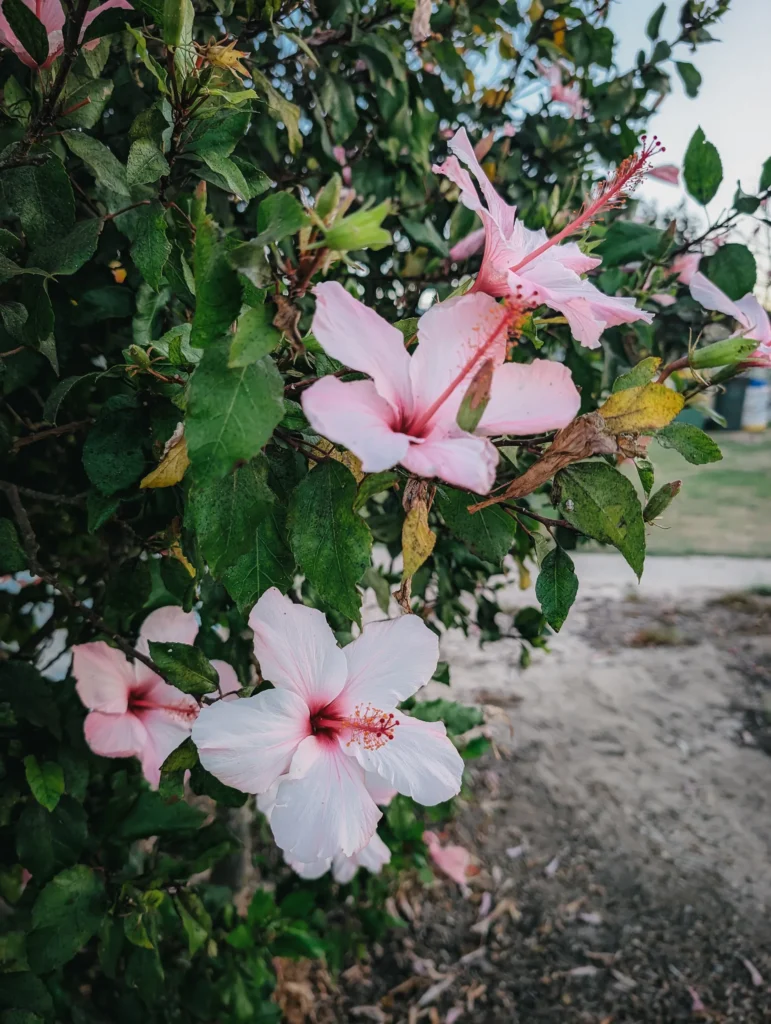

Perth to Exmouth: 2-Week Western Australia Road Trip Itinerary
- Things to know before you go
- 2-Week Western Australia Road Trip
- Campervan Rental FAQs
- My Top Tips for Your Western Australia Roadtrip
- Is 2 weeks in Western Australia enough?
Please note: This post contains affiliate links, meaning I may earn a commission if you make a purchase by clicking a link (at no extra cost to you). Thank you for supporting my blog! You’re the reason I get to do what I love!
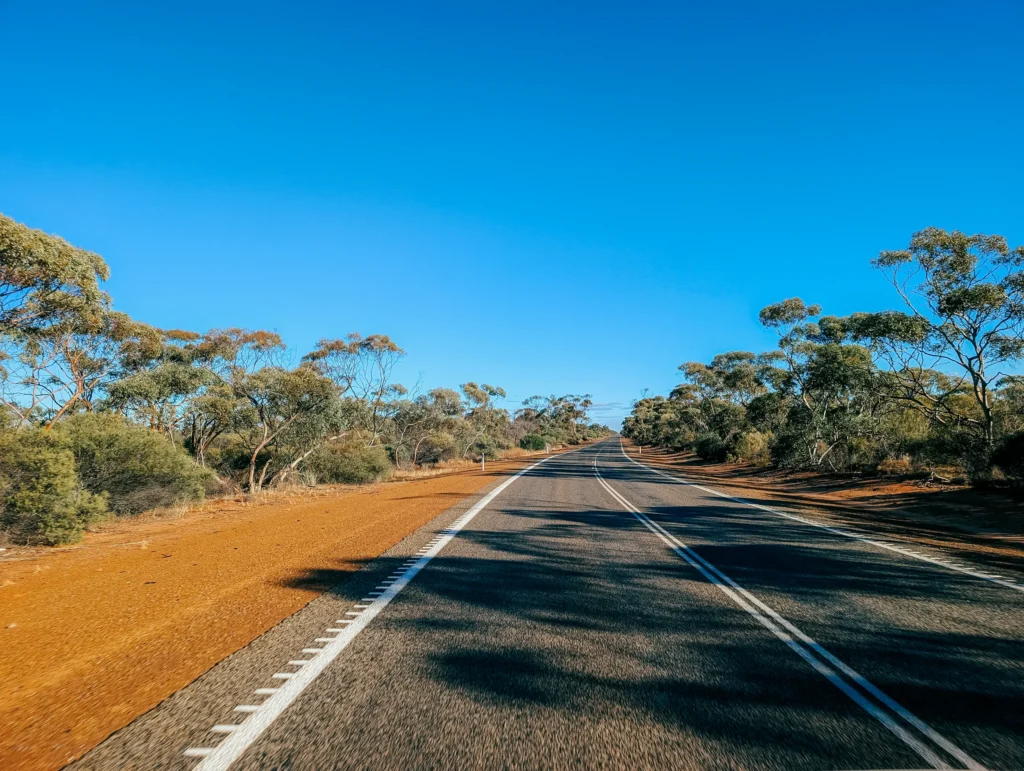
Things to know before you go
Planning your road trip to Western Australia? Here are a few things to know before you go. This section will cover things like… money, visas, driving (this is a big one!) and camping.
If you’re from Australia, you can skip this section because I already know you’ll be rolling your eyes at me. Or, if you’re from Australia and there’s something you’d like to add —something you wish more travelers knew before they came —let me know, and I’ll include it!
Money
Australia uses the Australian Dollar (AUD). At the time of this post and my trip (early summer 2025), the rate is $AUD 1 = $USD 0.65. Things in Australia are pretty expensive! It’s one of the most expensive counties we’ve traveled in, probably since being in the US two years ago.
However, you can definitely save money by buying groceries and camping for free when possible. On our trip, we did about 50/50 paid or free (donation-based) campgrounds.
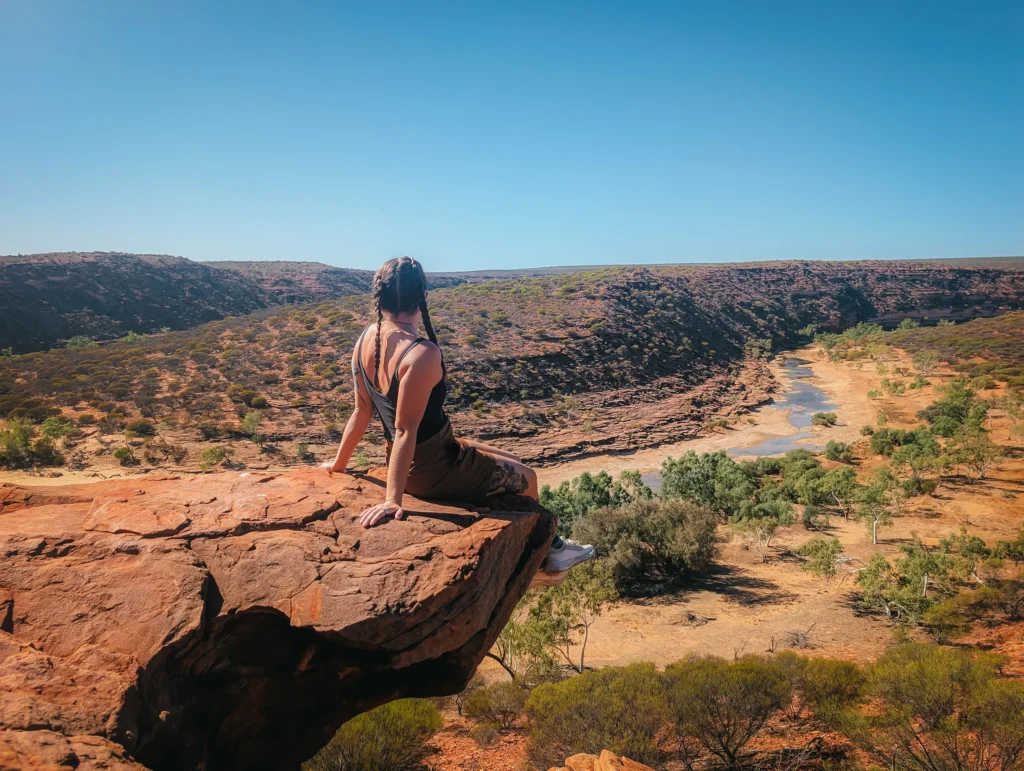
Driving
If you’re coming from the US or Europe, the Aussies drive on the opposite side of the road from us! If it’s your first time driving on the left, make sure to pay close attention, especially when you’re turning (you don’t want to swing out into the wrong lane). Pay attention to how big your campervan is, and make sure to give yourself plenty of time to stop and plenty of space to turn.
Honestly, I was a bit nervous to drive on the left, but you get used to it pretty quickly. Just make sure you’re always paying attention.
The best advice I can give you for your Western Australia road trip is this: Don’t drive at night (or at dusk, really). A good rule of thumb is to be at your campground before the sunset. I saw some rental car companies that even require you to sign an agreement that you won’t drive at night. Kangaroos are nocturnal animals, and they are genuinely attracted to car headlights. Be careful, and don’t risk it!
Besides, Western Australia has some of the best sunsets in the entire world. So you’re not going to want to miss that by being in the car. Trust me!
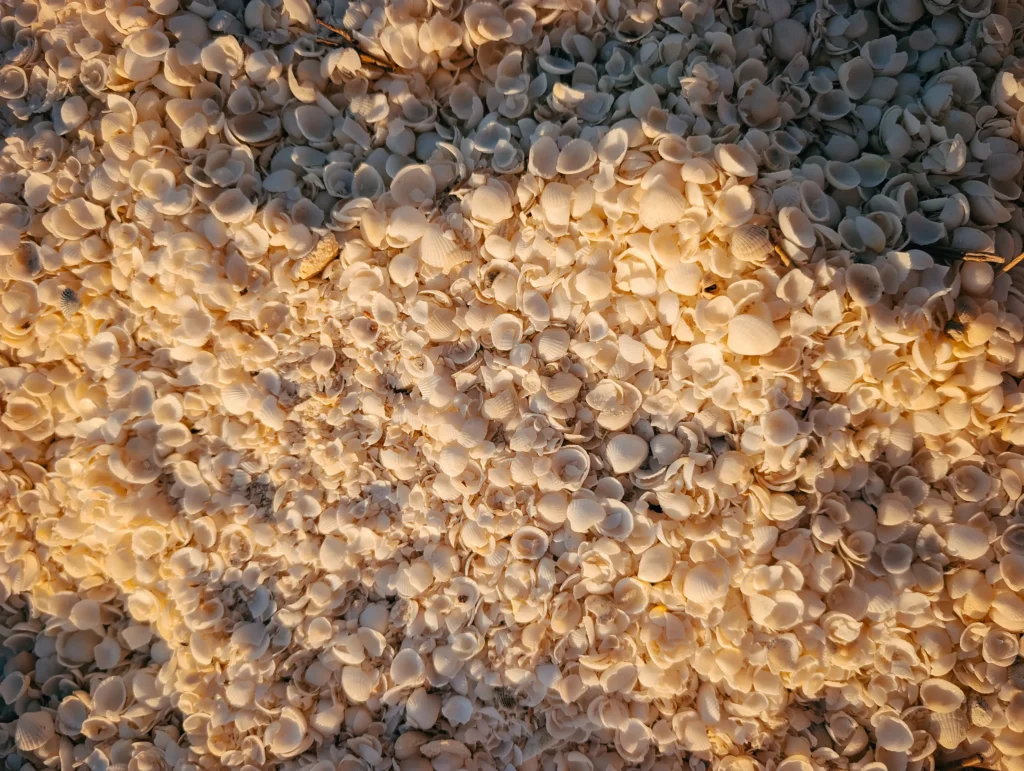
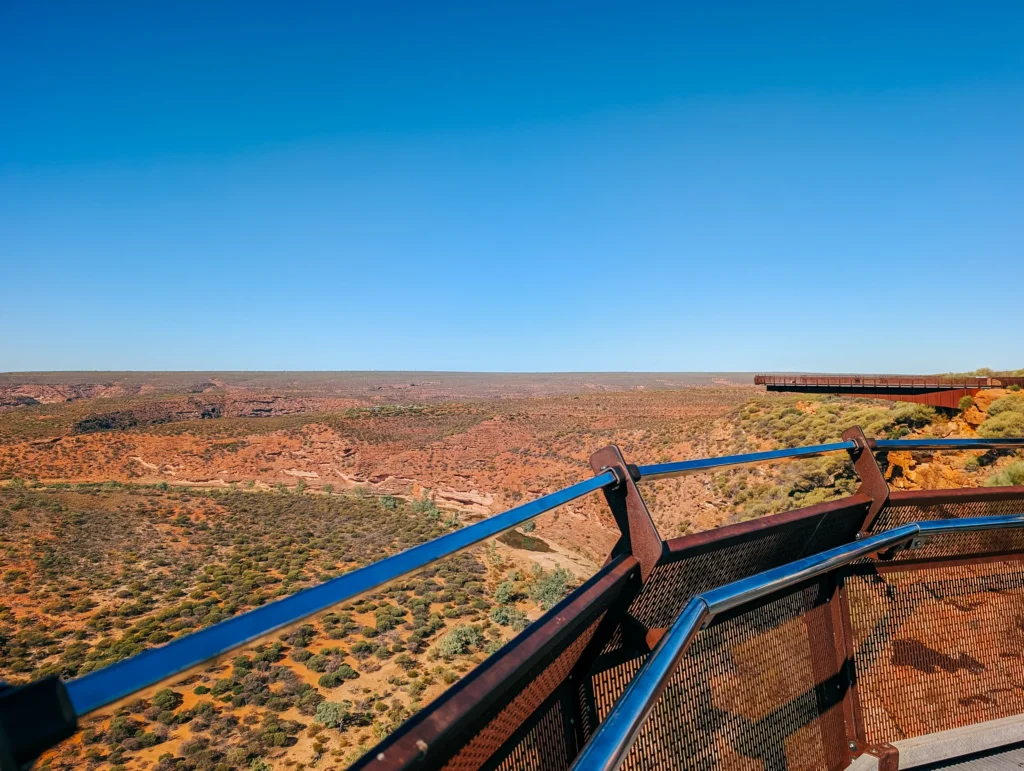
Safety
Other than driving safety (which is so, so important), Australia is a very safe country to travel in. We felt safe everywhere we went, and we were constantly meeting lovely locals who just wanted to chat and help us make the most of our trip.
I’ve also traveled around Australia as a solo traveler, exploring at night, hiking, and driving on my own, and I never felt unsafe. If you’re looking for a girl’s trip or solo destination – Australia is a very safe bet.
Visa and Entry Requirements
US citizens don’t need a traditional visa to enter Australia. Still, you will need to apply (in advance!) for an Electronic Travel Authority or ETA. I applied online a few days before our flight and had my ETA within a couple of hours. Don’t wait until you’re at the airport to do this; you won’t be allowed to fly. The application process is simple and costs AUD20.
At this time, you have to download the Australian ETA App to apply.
I know that my husband (who is British) didn’t have to pay for his entry to Australia, but he did have to apply ahead of time.
Always make sure you check visa and entry requirements before you travel. For more information about Australian ETA’s, visit their official website (link here).
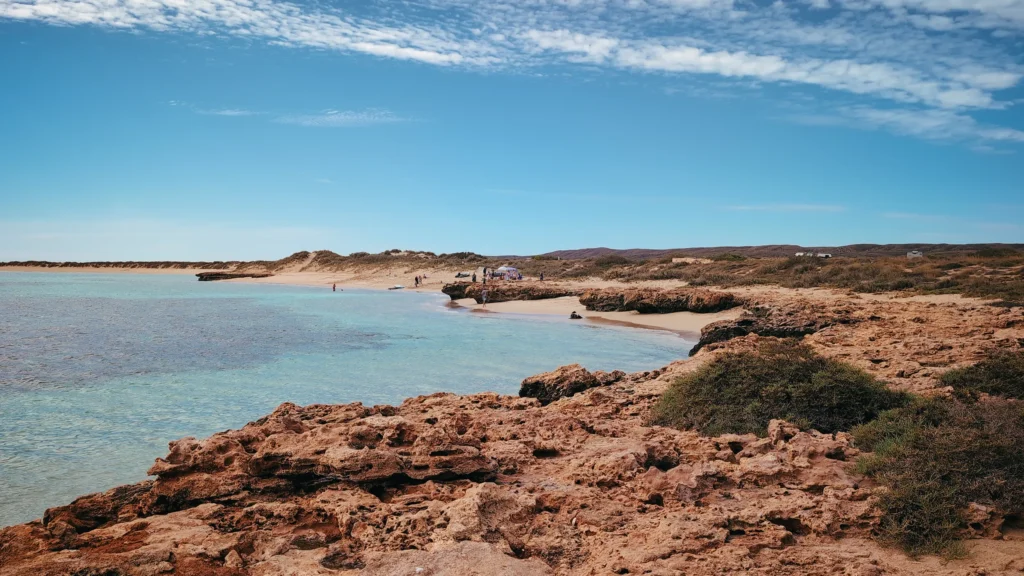
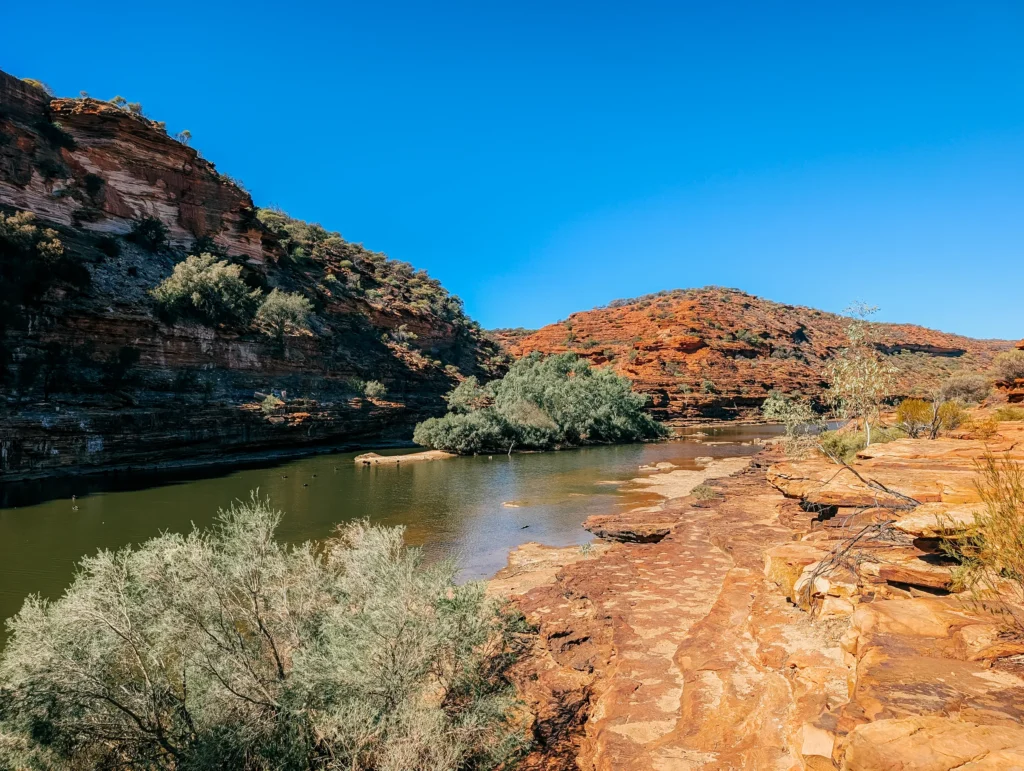
The Best Time to Visit
If you want to road trip through Western Australia from Perth to Exmouth, the best time to travel is from autumn to Spring. Winter will have mild temperatures during the day and cool temperatures at times (though it can get cold). Still, Northwestern Australia is a desert, so you can expect a dry, somewhat warm winter.
I think Spring would be beautiful. I know it’s the wildflower season, and I’ve been told by friends that this time of year in Western Australia is spectacular. Wildflower season typically occurs from August to October.
If swimming with Whale Sharks is your priority, aim to plan your trip around May and June. However, if you want to see humpback whales, visit between June and October.
2-Week Western Australia Road Trip: Perth to Exmouth
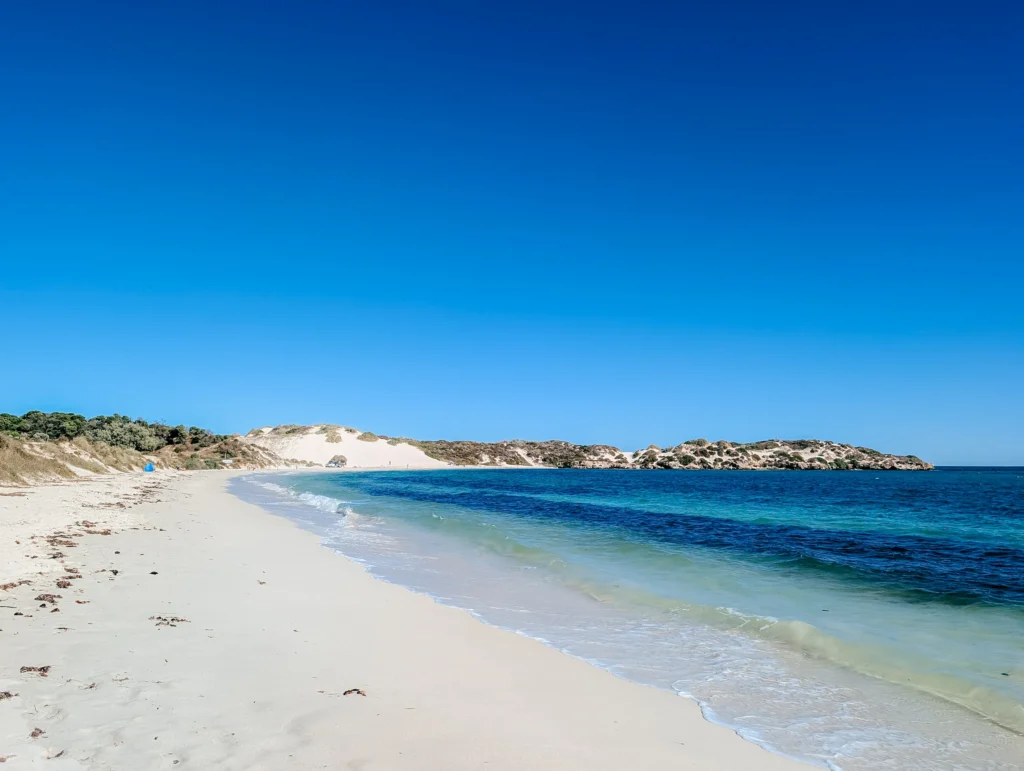
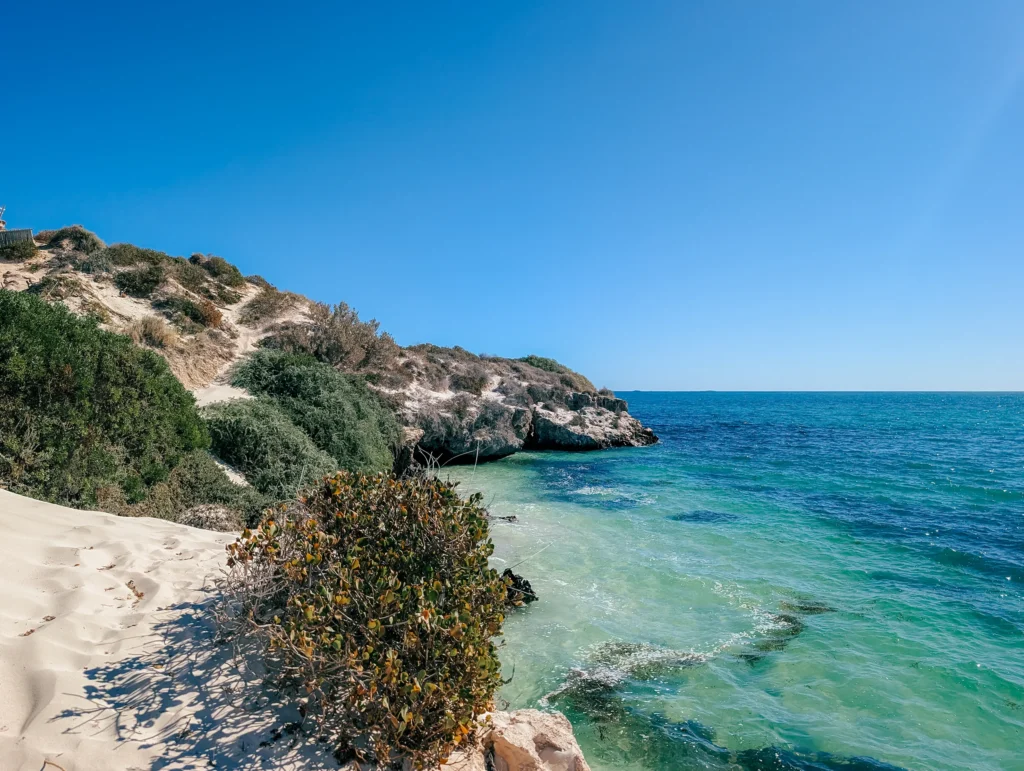
Day 1: Perth to Jurien Bay (2.5 Hours)
Start your trip in Perth. I recommend picking up your campervan as early as possible. If your flight arrives late, you can stay overnight in Perth and collect your campervan early the next day (that’s what we did).
So, pick up your campervan as early as possible and get out of the city. We stopped at a big supermarket on our way out of Perth for supplies. Then we made the 2 (ish) hour drive to Jurien Bay. The coastal road up to Jurien Bay is absolutely stunning.
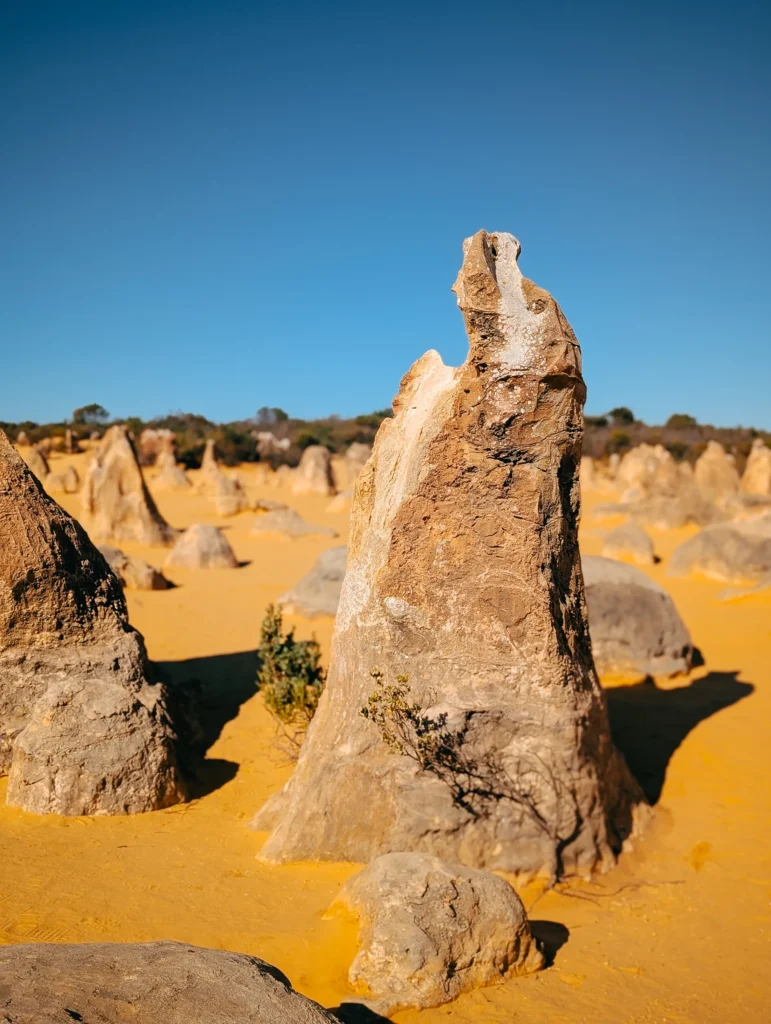
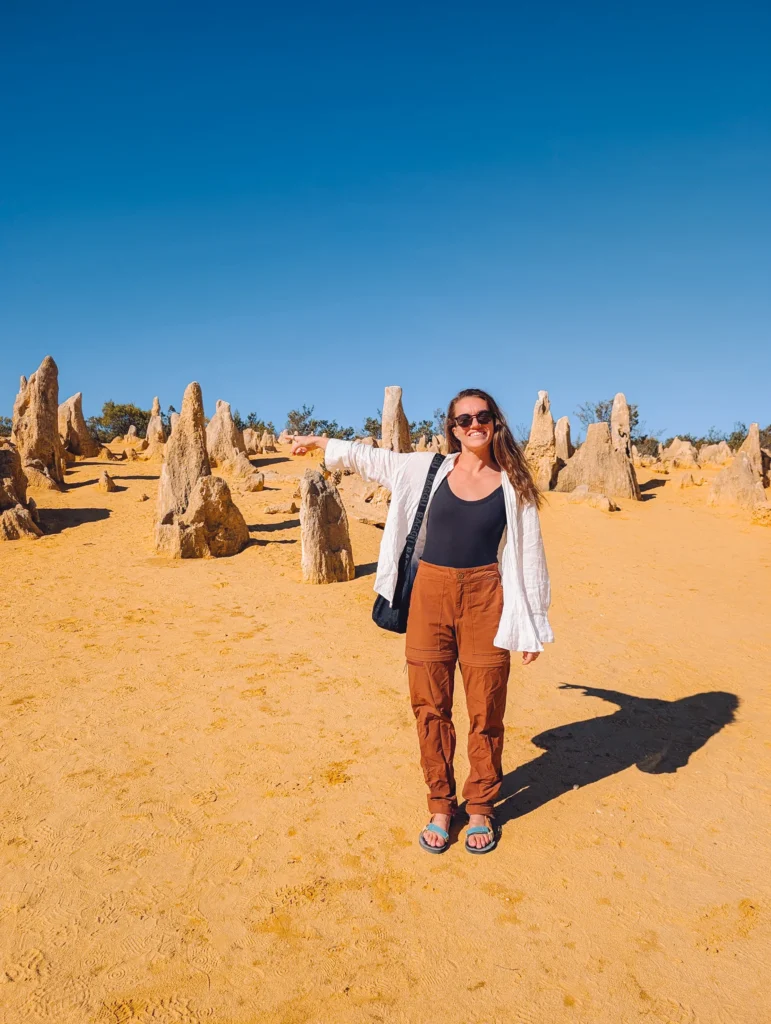
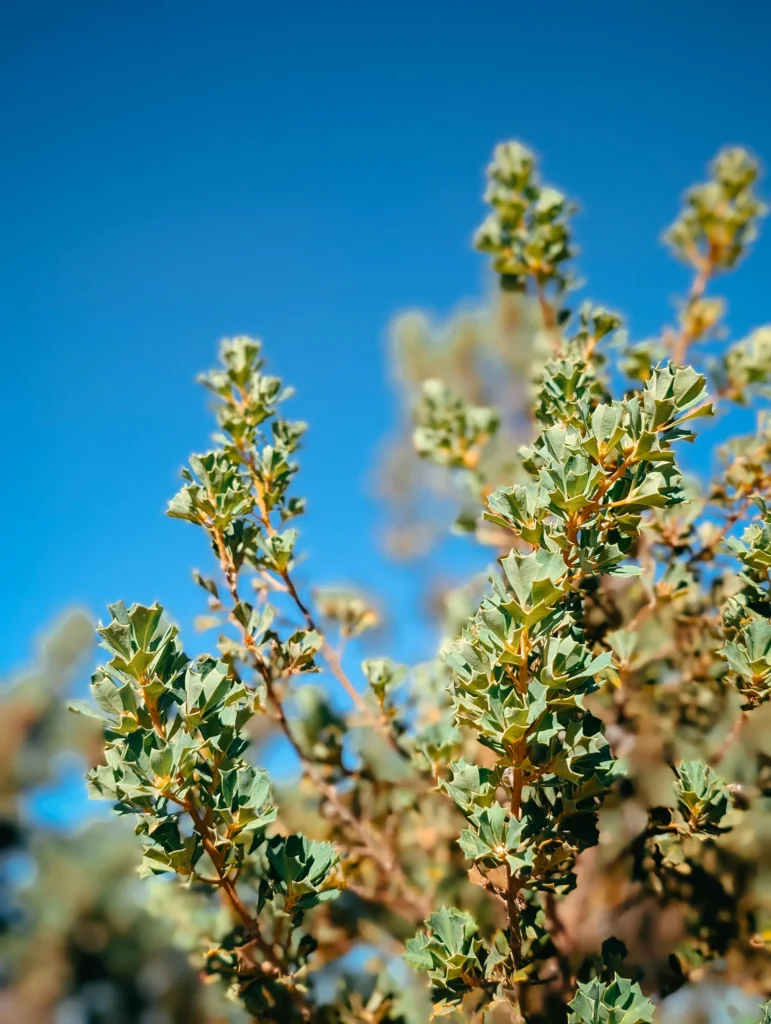
If you want a day one detour, stop at the Pinnacles Desert at Nambung National Park. You can stretch your legs for an hour on the pinnacle walk and eat a quick lunch before continuing on your way. Once in Jurien Bay, you can go for a swim (the water is freezing), enjoy the sunset on the beach, and take a walk through town.
Sleep at the Jurien Bay Tourist Park (it’s steps away from the beach).
Jurien Bay is famous for its friendly sea lions! We didn’t have a chance to meet them, but I highly recommend it. Book your excursion in advance (that’s the mistake we made). I already know I’ll be heading back to Jurien Bay to meet the sea lions one day, so don’t make the same mistake we did.
I recommend booking your sea lion adventure for the morning of day two. It’s only a few hours, and you can hit the road when you get back.
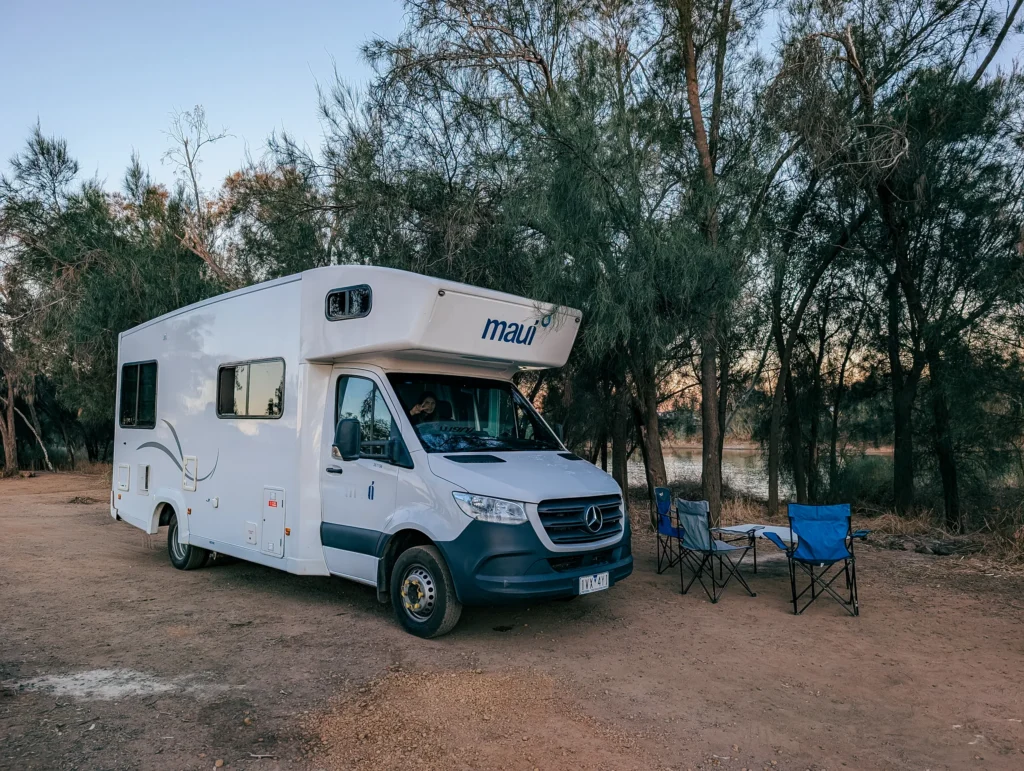
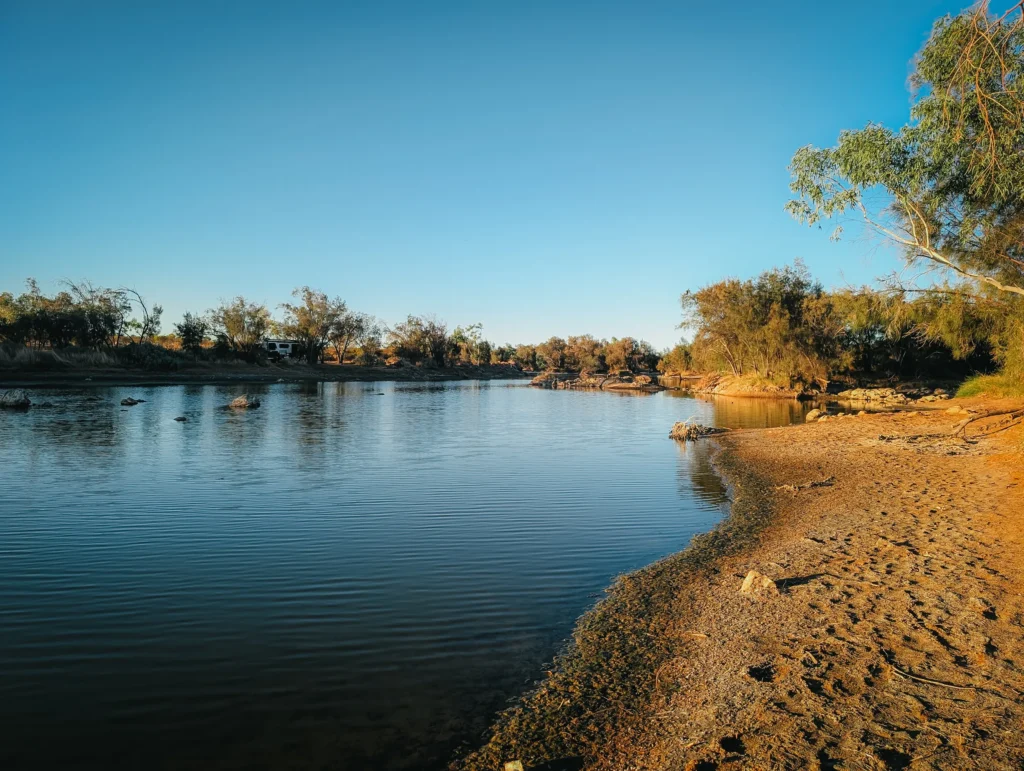
Day 2: Jurien Bay to Galena Bridge (3.5 Hours)
After your swim with sea lions, hit the road. Your destination for the day is Galena Bridge (a really nice free camping area near Kalbarri).
Along the way, make sure to stop at Sandy Cape Lookout. Sandy Cape is your first taste of what incredible Western Australian beaches have in store for you. We stopped for lunch at Sandy Cape before heading on our way to Galena Bridge.
The reason we chose to camp at Galena Bridge is because it was a highly rated free camp area that we could definitely get to before the sunset. And it was close enough to Kalbarri that we could be hiking by 09:00 the next day. We loved Galena Bridge; it was one of our favorite campgrounds on the trip. It’s right along the river, and even though it’s inland, we still had a stunning sunset.
Sleep at Galena Bridge Rest Area.
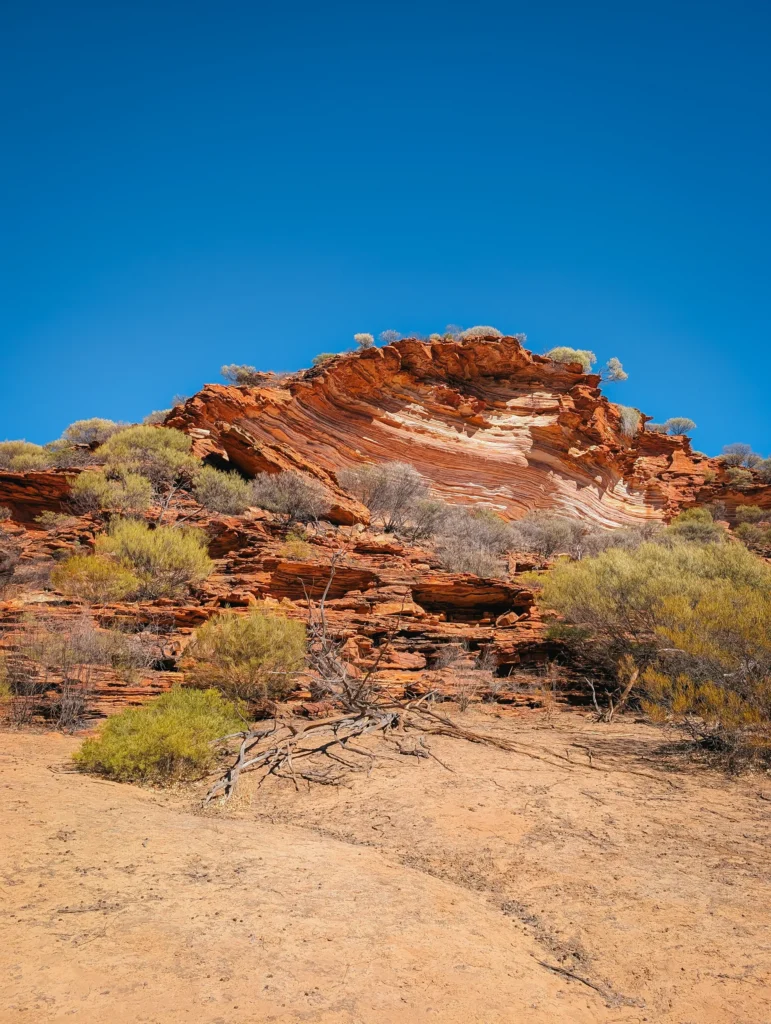
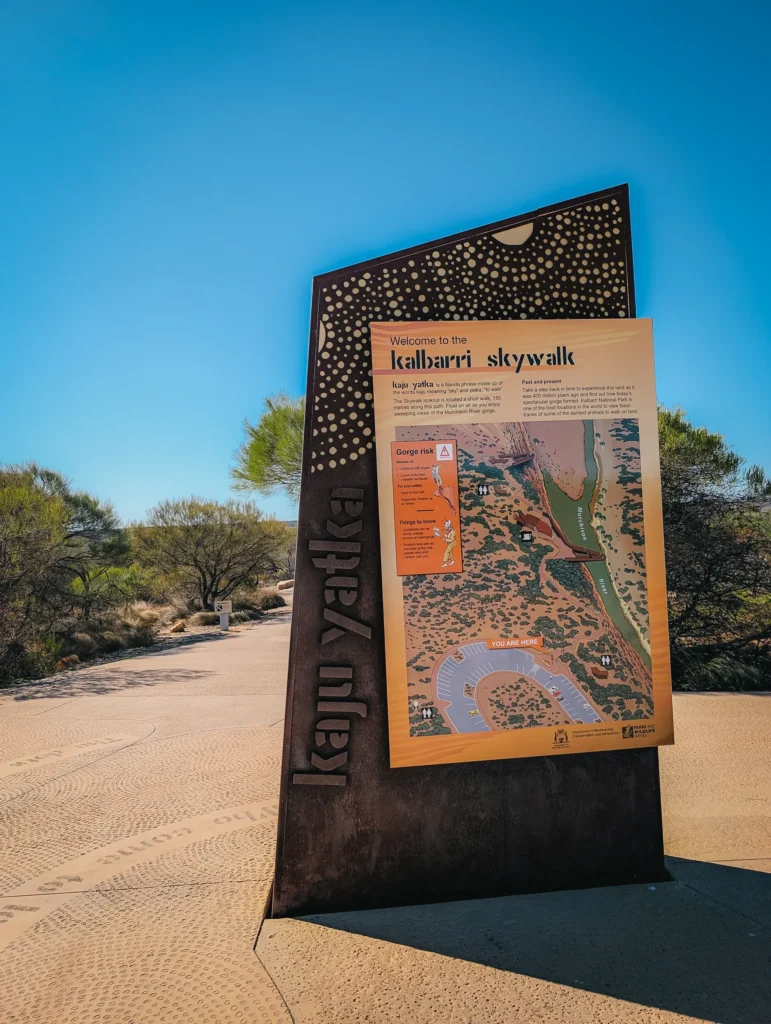
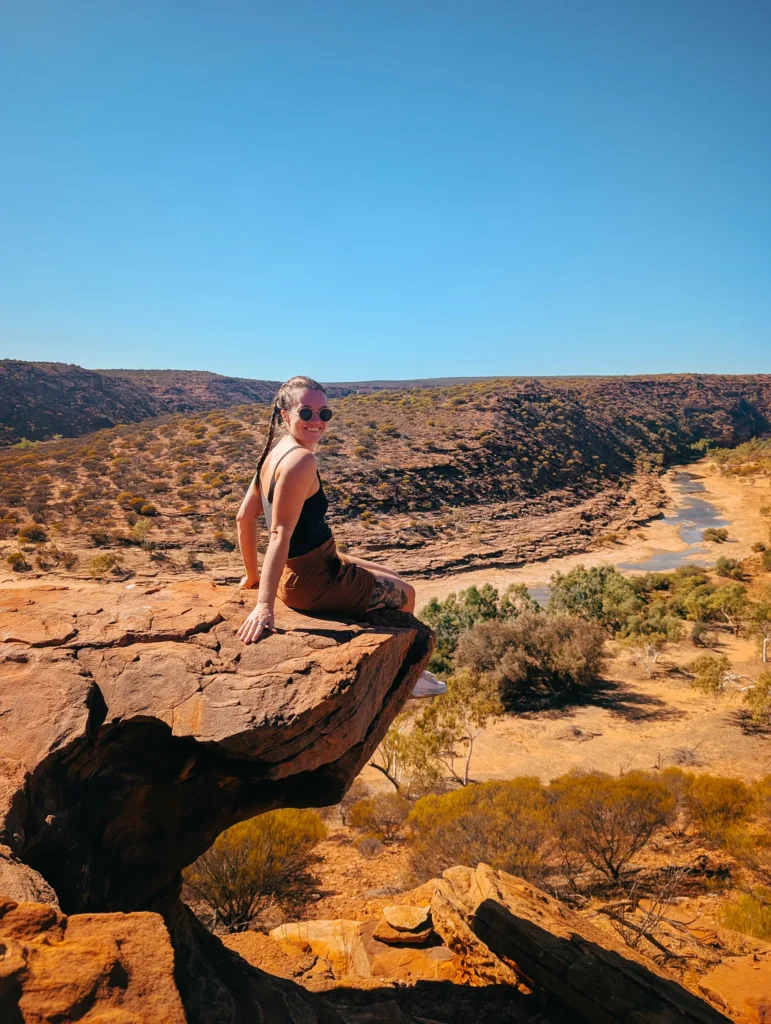
Day 3: Kalbarri
You’ll definitely want a full day to explore Kalbarri, especially if you want to hike around Kalbarri National Park. Entrance to the National Park costs AUD$17 per vehicle.
We started our day early, driving from Galena Bridge into the Kalbarri National Park, where we did the Loop and Nature’s Window hike. According to AllTrails, the hike is 9.2km, and we found it to be pretty easy (aside from the flies, the flies made it much harder). It took us about 2.5 hours to complete.
After the hike, we made sure to stop at the Kalbarri Skywalk, where we had an ice cream (try the Golden Gaytime!) with the most incredible view.
Once you’ve finished exploring the park, head to Kalbarri town, where you’ll be sleeping for the night. Once again, you’ll have a beautiful sunset, and for dinner, I highly recommend dinner at Finlay’s Kalbarri.
Sleep at Tasman Holiday Parks – Kalbarri.
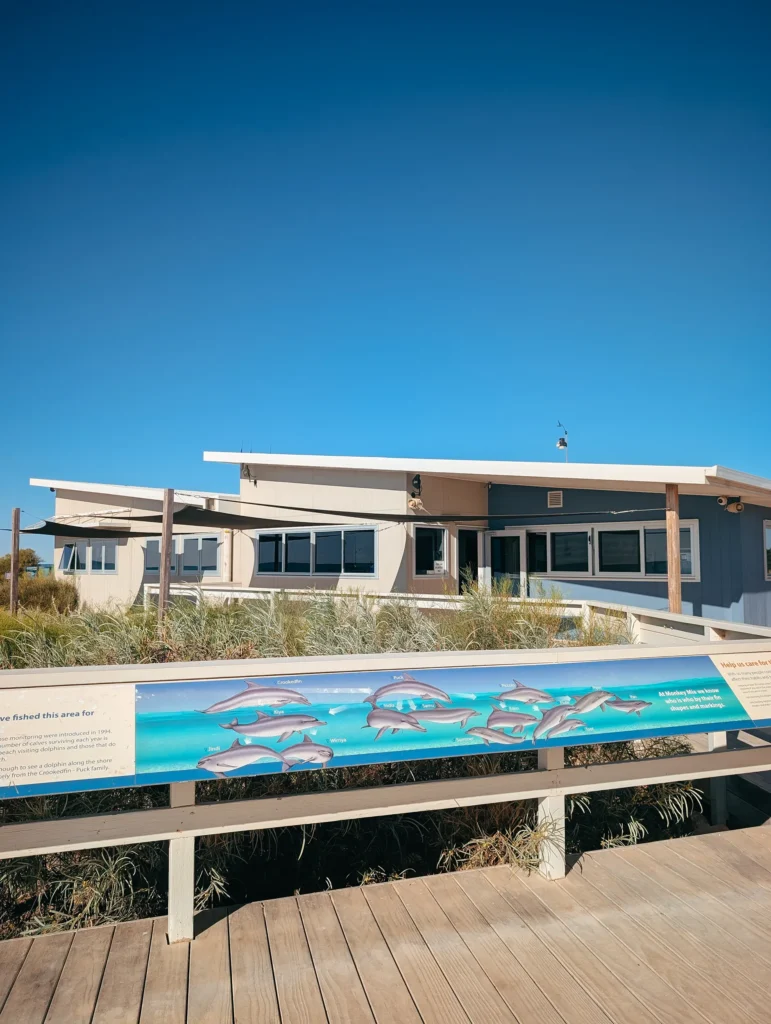
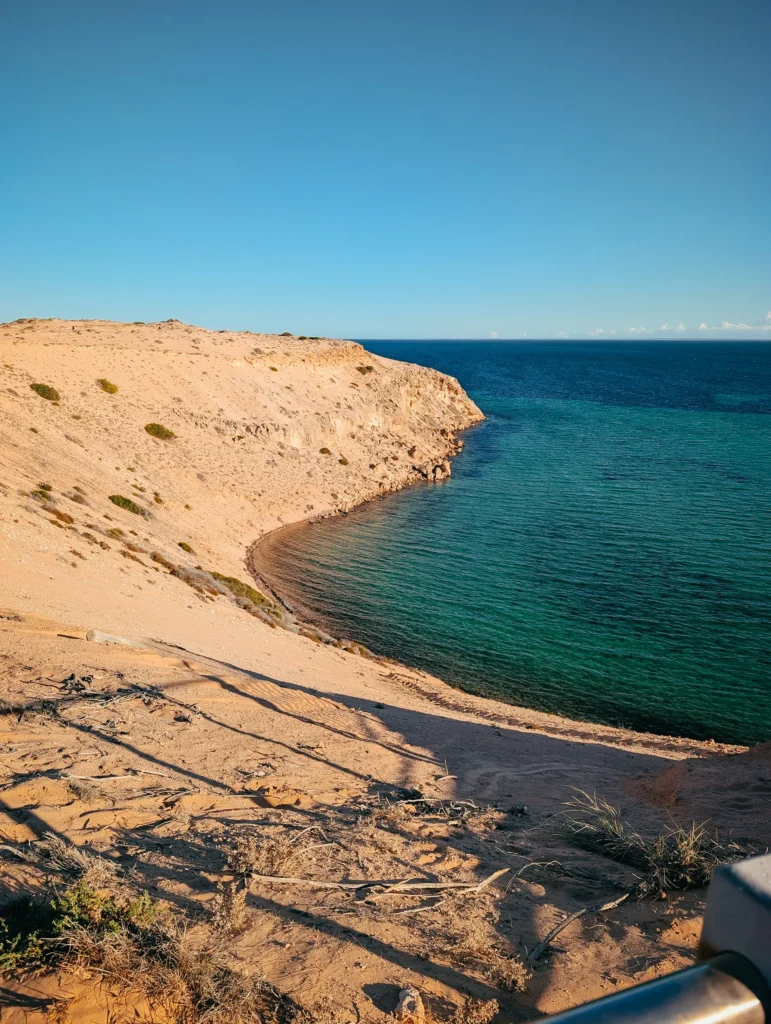
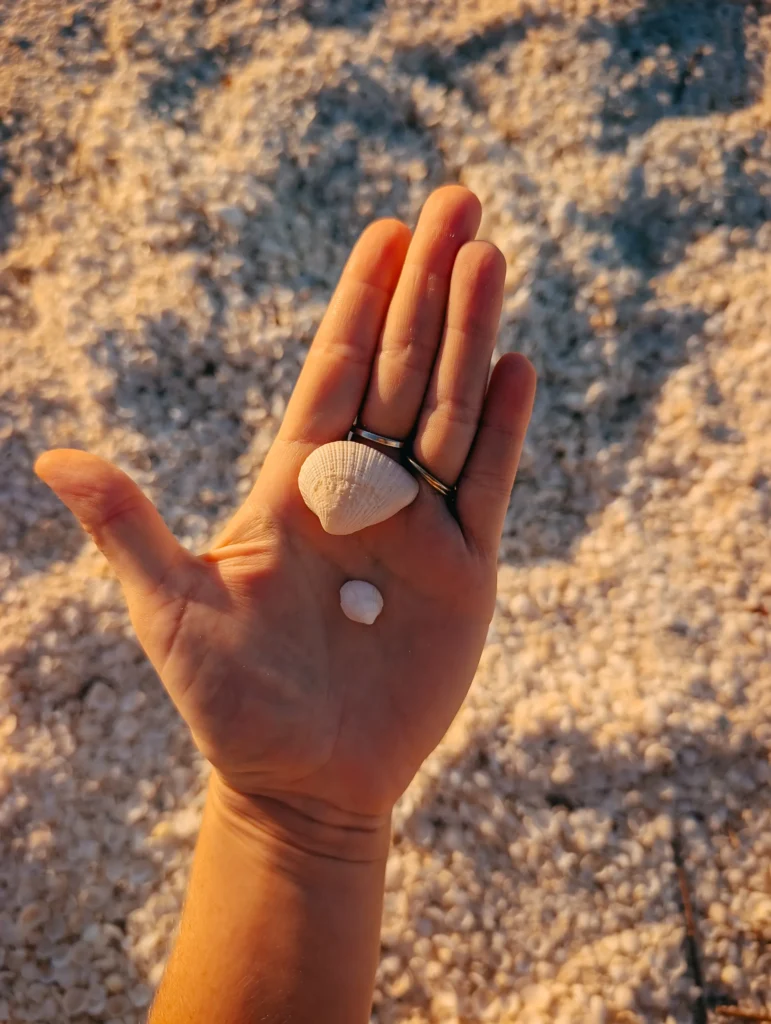
Day 4: Kalbarri to Monkey Mia (4 Hours)
Wake up early because you have a long day ahead of you. The drive from Kalbarri to Monkey Mia isn’t your longest distance, but there will be a lot of places to stop and explore around Shark Bay. I could do a whole post about Shark Bay (and maybe I will!), but for now, here are our favorite stops:
- Shell Beach (my husband mocked this one, but it’s actually really, really cool.
- Whale Bone Point Scenic Lookout
- Eagle Bluff
- Little Lagoon
- Monkey Mia
We didn’t have a four-wheel drive, so we weren’t able to explore Francois Peron National Park. That’s another thing to come back for.
I also didn’t realize it until we were almost there, but Monkey Mia is actually famous for its resident dolphins. It’s become a dolphin research center, and if you’re lucky, you’ll see the dolphins swimming right up to the shore. We had a dolphin come out of nowhere and swim right past us, which was a serious highlight of our trip.
You have to pay AUD$15 per adult to enter Monkey Mia (and you will have to pay that if you stay at the RAC there).
Monkey Mia is FAR away from the main road, and it’s a wonderful part of Australia. That’s why I recommend staying one night there. You can book a caravan spot at the RAC Monkey Mia for one night. You won’t regret it! We saw dolphins, and an emu walked directly past our camper while we were cooking lunch.
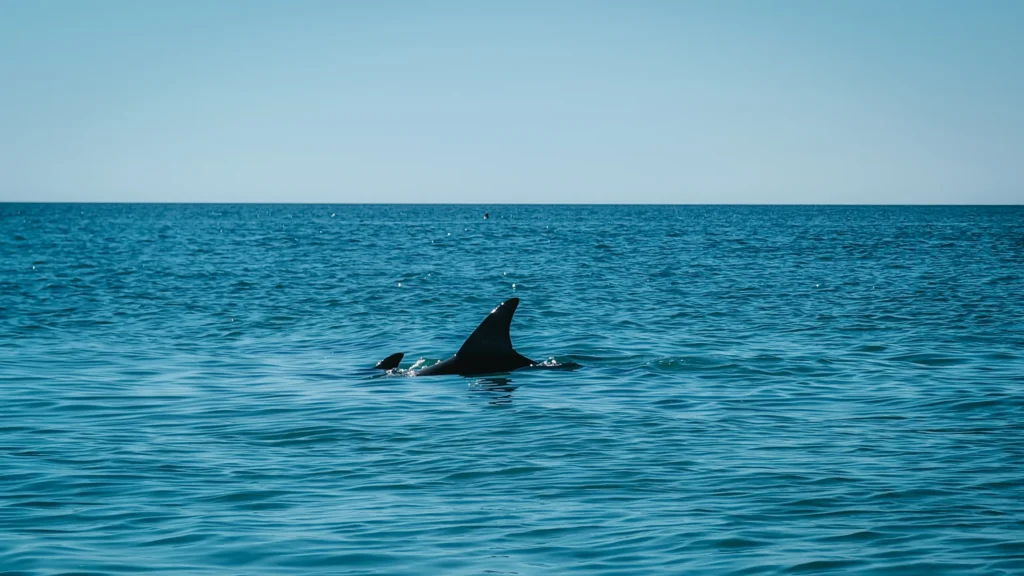
Day 5: Monkey Mia to Coral Bay (6 Hours)
This long driving day is the cost of your detour to Monkey Mia, but it was worth it. Even with the whale sharks still to come, Monkey Mia was my sister-in-law’s favorite part of the trip. But yes, it does mean that today, you will mostly be driving.
Depending on what time you hit the road, you’ll be getting to Coral Bay just in time to watch the sunset. You could always get up early, have a swim, and still have time for one or two stops on your way to Coral Bay. If there’s anything in particular in Shark Bay that you haven’t seen yet.
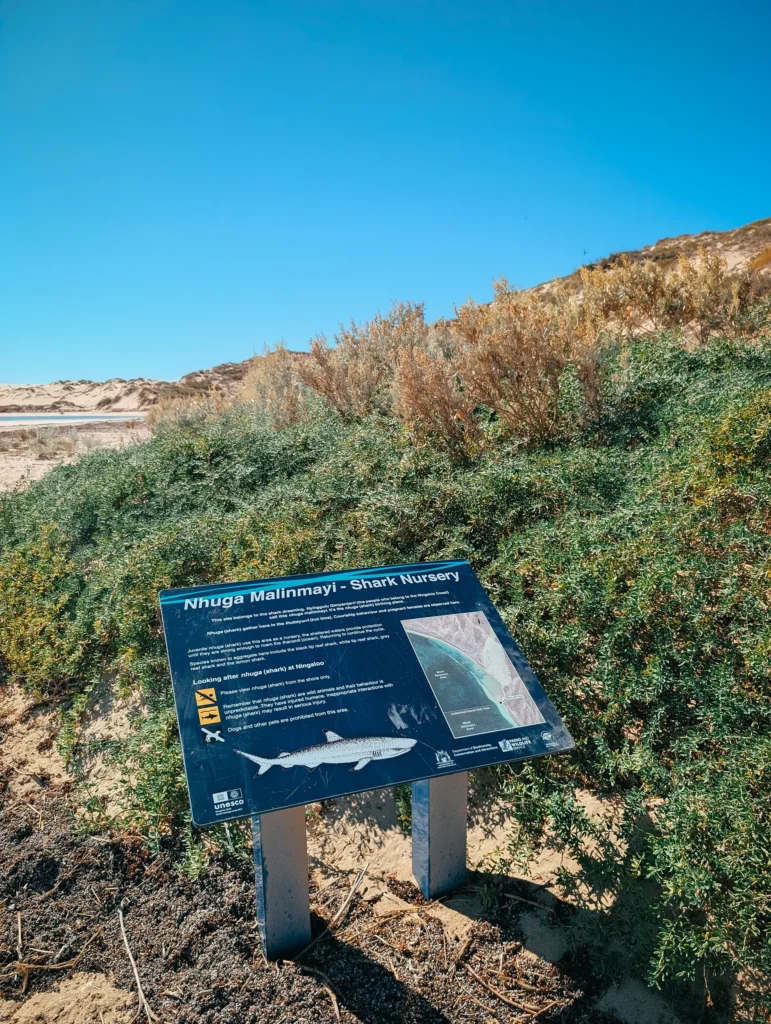
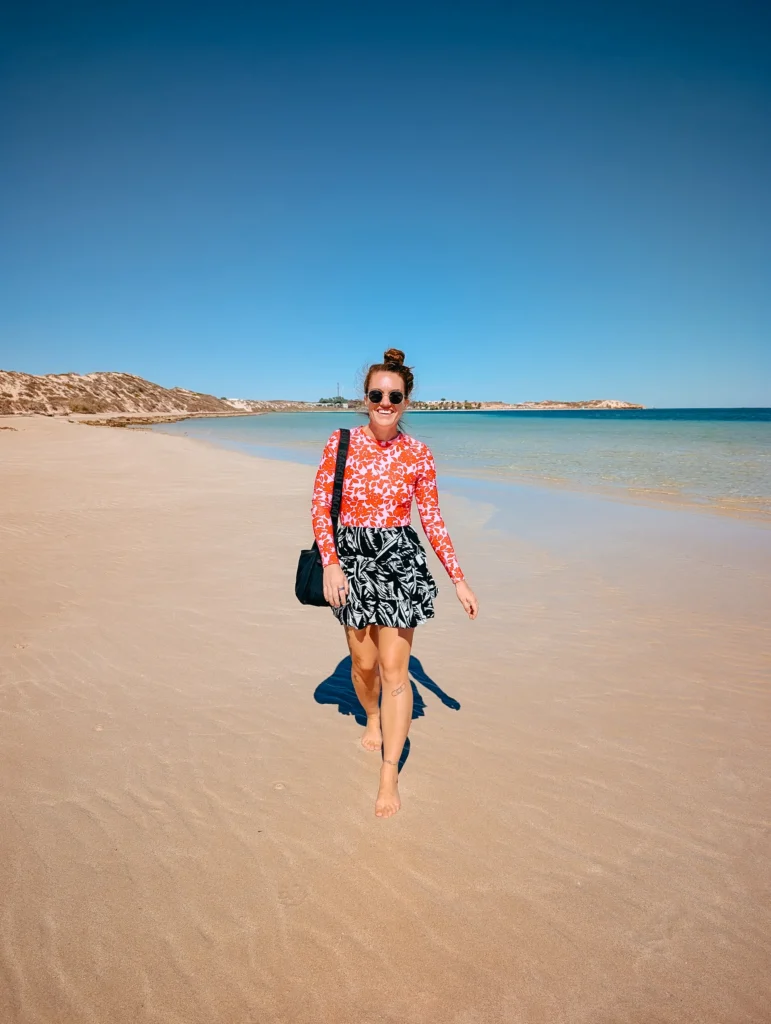
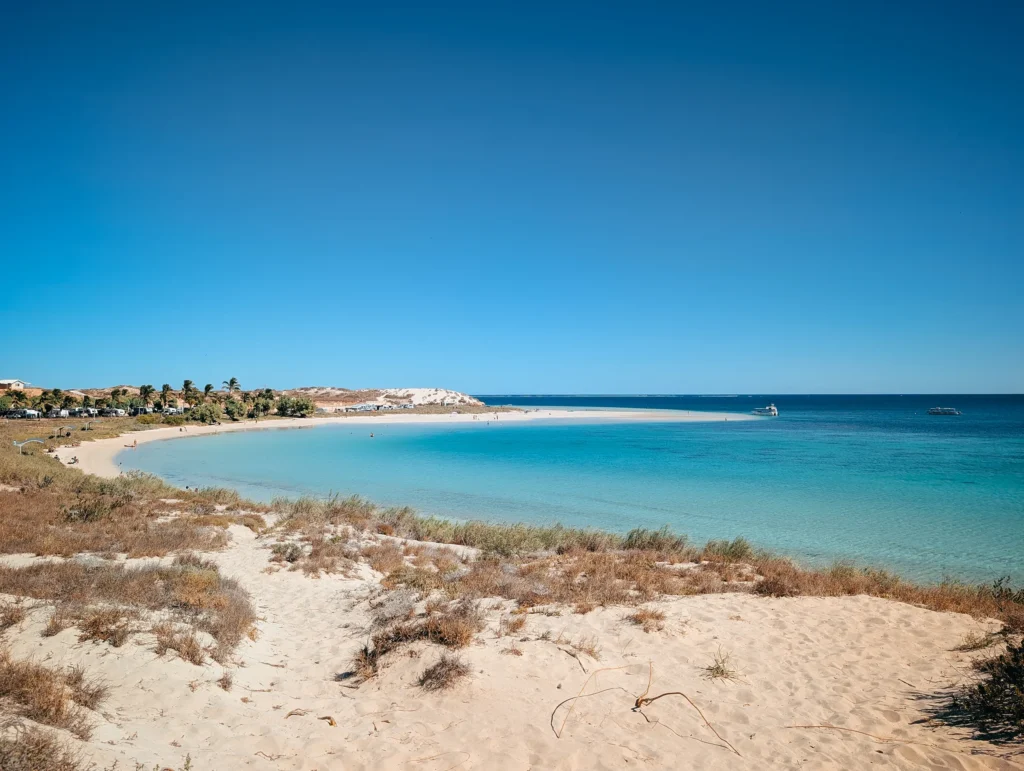
Day 6: Coral Bay to Exmouth (1.5 Hours)
Wake up in Coral Bay and head to the bakery for a cinnamon roll and coffee. While you’re in Coral Bay, you have a few options for activities. If you’d like to see the Manta Rays, make sure to book a half-day Manta Ray snorkeling tour with Ningaloo Reef Dive and Snorkel.
Otherwise, go for a swim in Coral Bay (one of the most beautiful beaches around) and then walk over to the Shark Sanctuary. You can’t swim at the Shark Sanctuary, but it is an absolutely beautiful beach where (at high tide) you can see baby sharks swimming! We visited at a very low tide, so we didn’t see any sharks, but we did see a few baby stingrays.
Unfortunately, the reef around Coral Bay has suffered a devastating mass bleaching event after a coral spawning and tidal issue. You can learn more about what happened here. The snorkeling broke our hearts, but the area is still beautiful, and the Shark Sanctuary was our favorite beach in all of Western Australia.
After lunch around Coral Bay, make your way to Exmouth, where you’ll be spending a couple of nights (finally, a couple of days without driving!).
Sleep at the Exmouth RAC Holiday Park. It’s well-located and has everything you need during your stay in Exmouth.
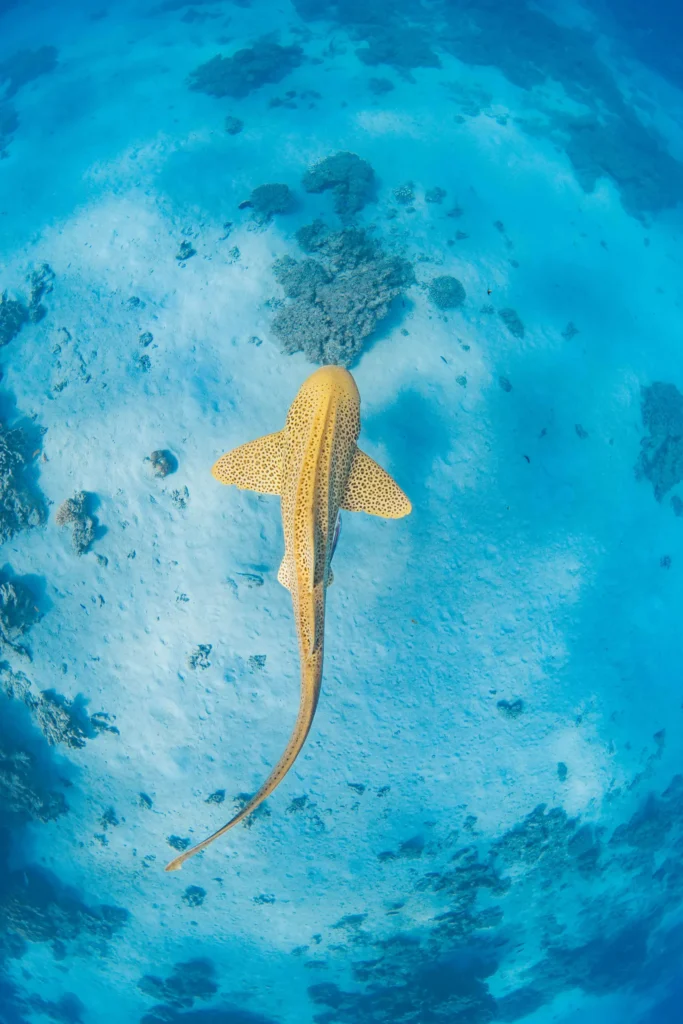
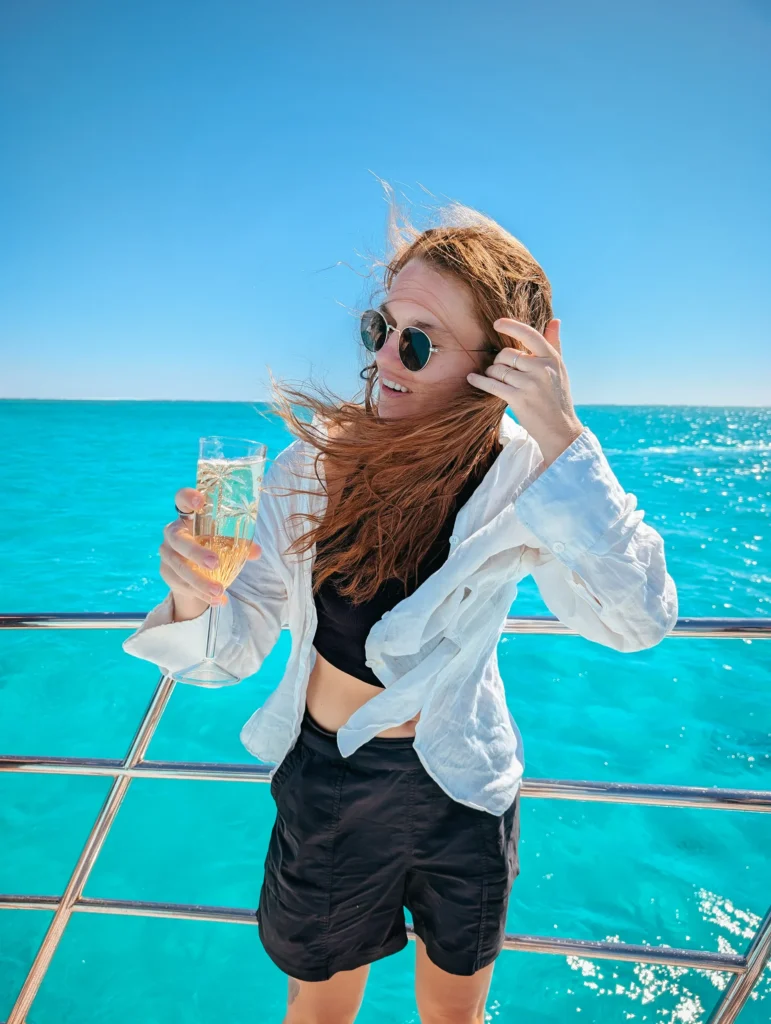
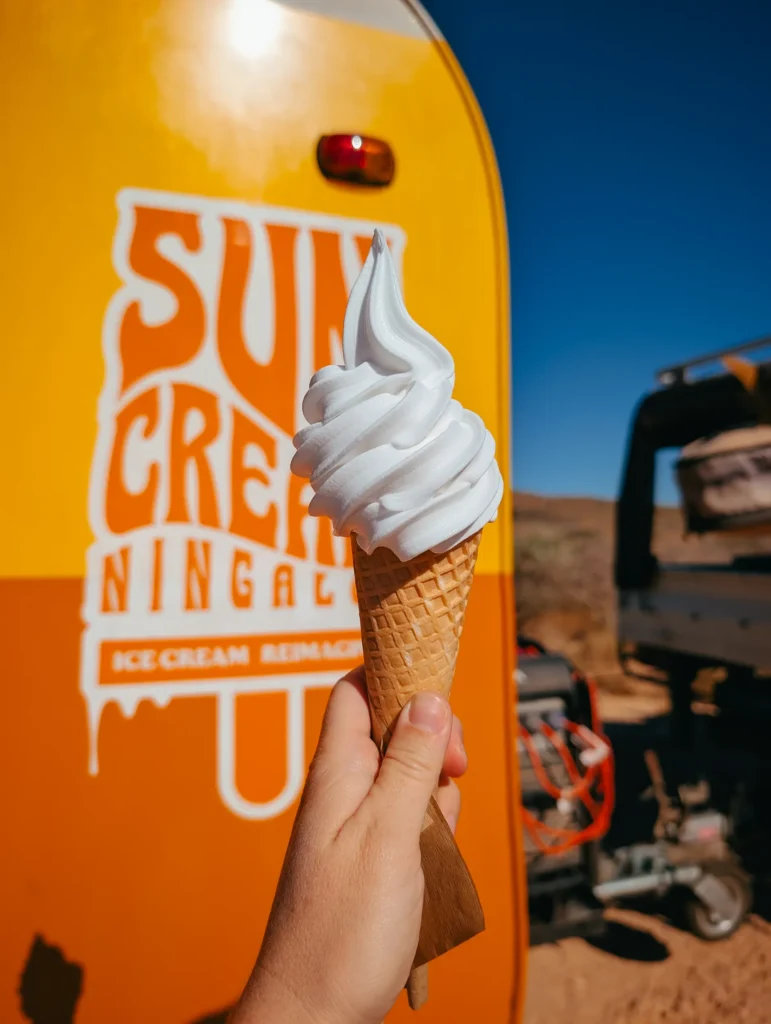
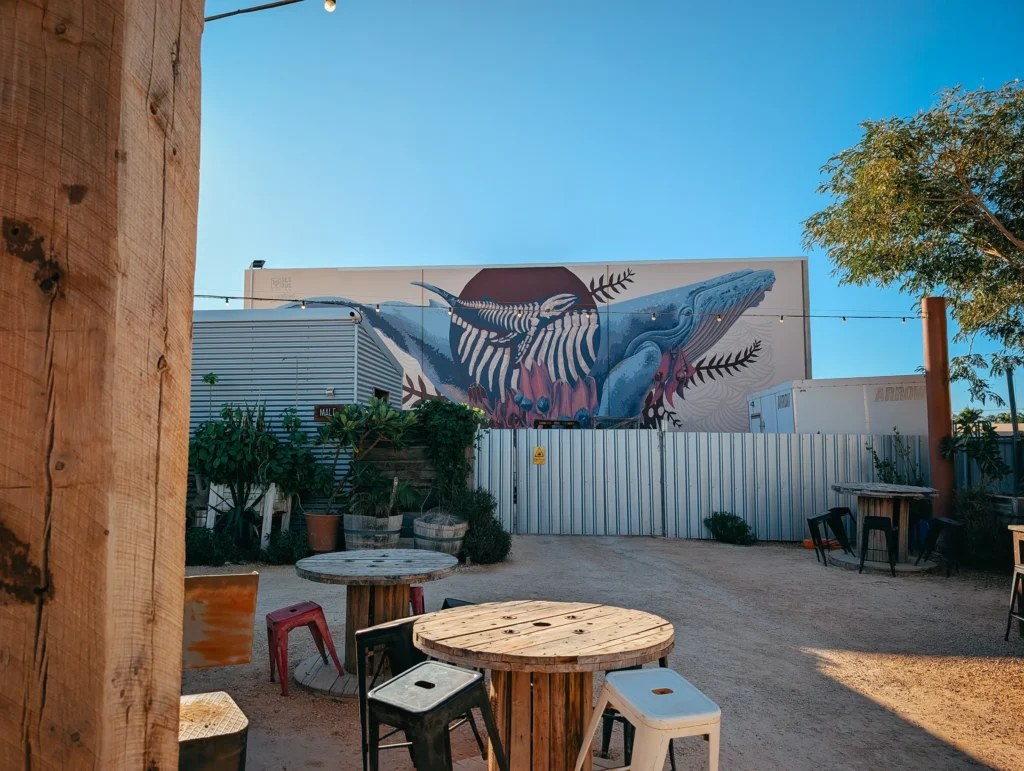
Day 7-9: Exmouth
I recommend spending at least 3 nights in Exmouth. This is where you’ll have a chance to see whale sharks and humpback whales and scuba dive on the Ningaloo Reef. The activities you choose to do will help determine how many nights you should spend here.
Each activity is a full day out, so you won’t want to drive afterward.
We did one day of scuba diving with Dive Exmouth and one day of snorkeling with whale sharks with Ningaloo Discovery. Both activities were very expensive, and if I’m being candid, I would pick the whale sharks over diving.
The whale shark experience with Ningaloo Discovery was amazing. There are whale shark snorkeling tours around the world that practice whale shark feeding, don’t monitor the number of swimmers, and end up causing more harm than good with snorkelers touching and crowding the whale sharks.
In Ningaloo, spotter planes are used to locate the whale sharks, and then each boat is only allowed to have 10 swimmers in the water with one whale shark. And each whaleshark is only allowed to be swam with for one hour. They also don’t feed the whale sharks (which was what I was looking for).
Here’s the thing, it’s a very expensive experience. But it was worth it for us. I’ve always dreamed of seeing these amazing animals, and I really wanted an experience that was ethical. There were times when it felt like we were the only people there. It was absolute magic.
Make sure to visit Whalebone Brewing Company at least one night of your trip. We actually went a few times, and it was always wonderful. They have great beer and wine, delicious food, and a really lovely atmosphere.
Sleep at the Exmouth RAC Holiday Park.
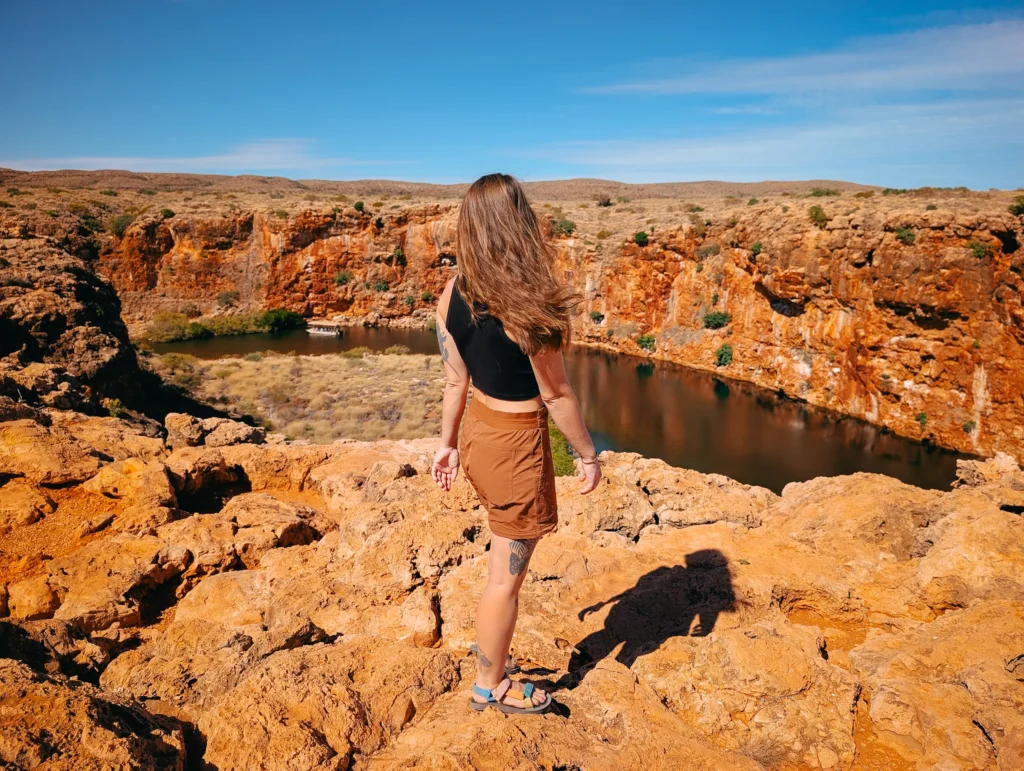

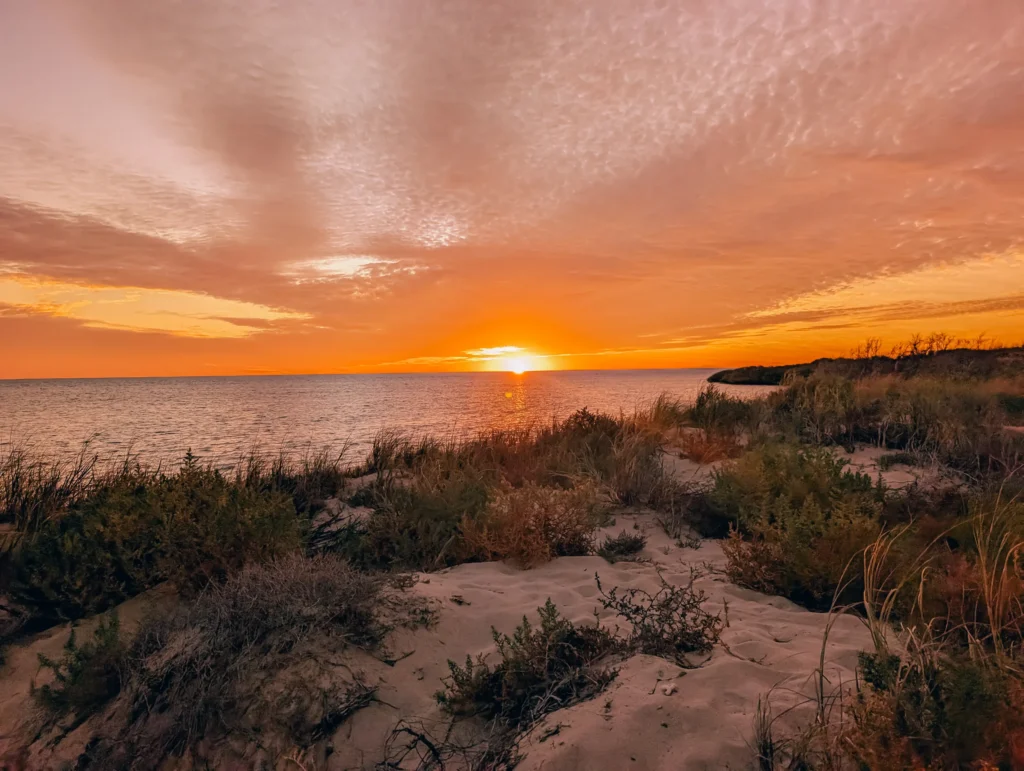
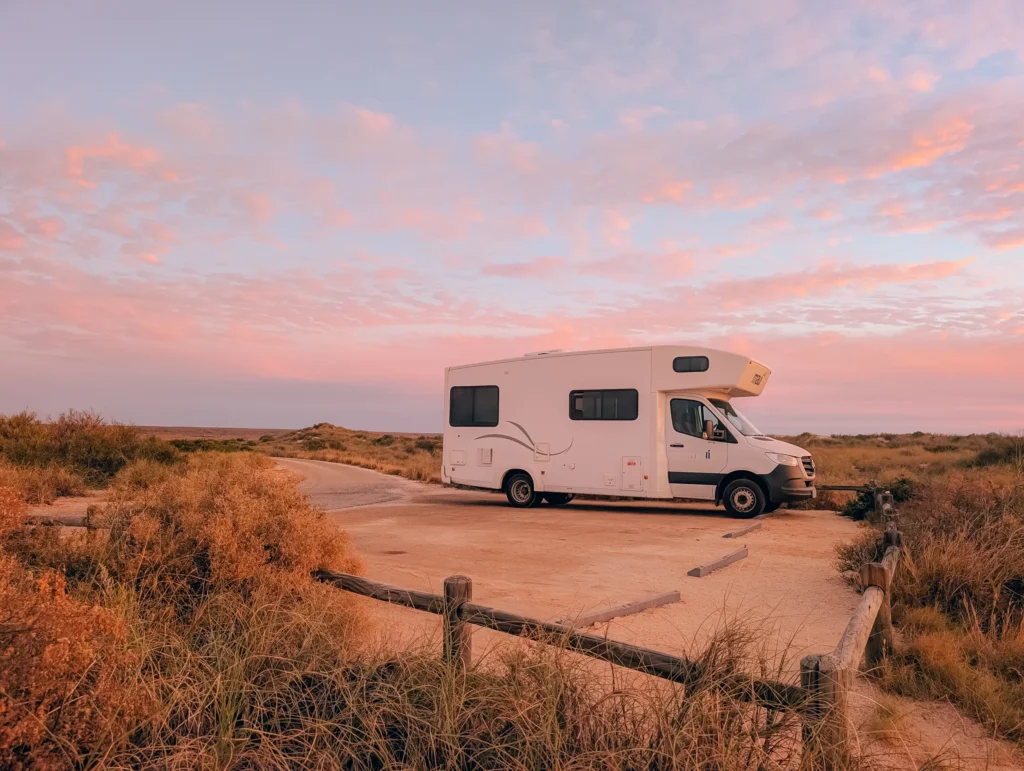
Day 9-10: Cape Range National Park
After a few days of adventure around Exmouth, it’s time to head into the Cape Range National Park. My advice here is to book your campground in advance. There are some beautiful campgrounds in the Cape Range National Park, but they are small, and when we were traveling, they were all booked up. This meant we had to camp in Exmouth and drive into the park each day.
I recommend booking at least two nights around Turquoise Bay. That’s definitely where we would have stayed if we’d had the chance. But there is plenty to see and do in Cape Range, especially if you have a four-wheel drive vehicle.
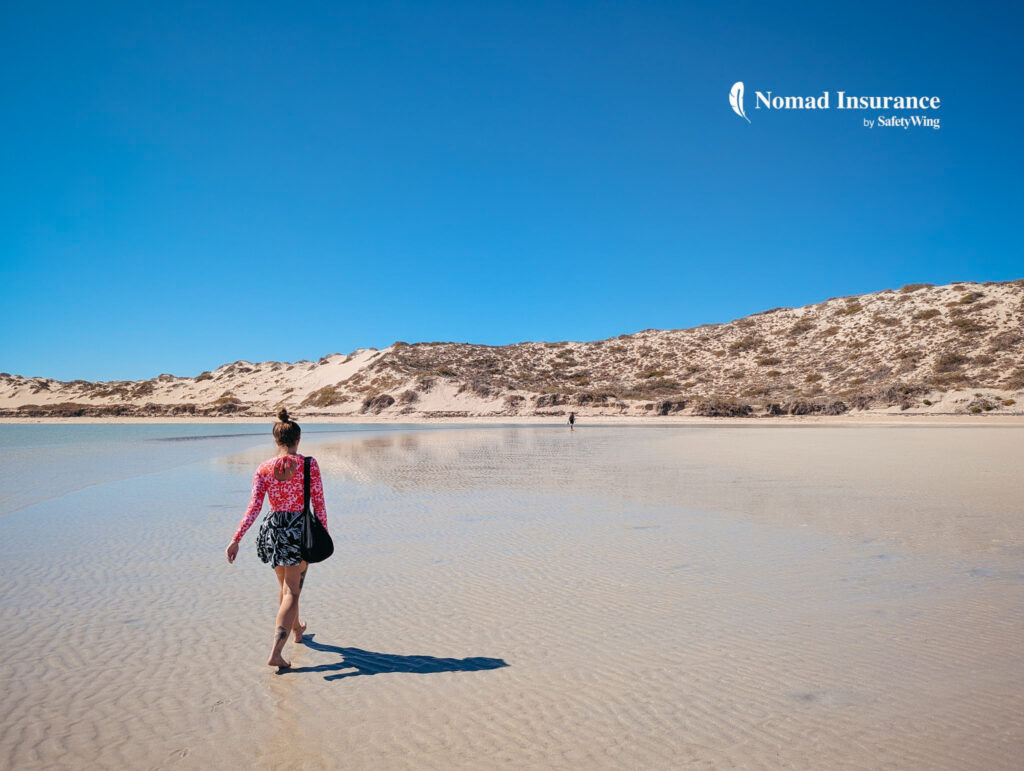
Cape Range is far away from everything, so if you’re spending a few days out there, make sure you’re traveling with travel insurance. It’s one of those things no one wants to need, but everyone is incredibly grateful to have when they do.
I always travel with SafetyWing because it gives me a safety net when I’m far from home. They offer global coverage in 180+ countries and you can even buy insurance while you’re already abroad, which is perfect when plans change last-minute.
With SafetyWing’s Nomad Insurance (the Essentials plan), you get features that matter most to travelers like us: medical treatment and hospitalization coverage, emergency evacuation and repatriation, lost checked luggage protection, and travel delay benefits if you’re stuck longer than expected.
It’s subscription-based and flexible, so you can stay covered from a few days to many months without worrying about complicated policies. I’ve learned over the years that it’s better not to risk it. Having travel insurance is one of those things you hope you never need, but are so grateful to have when life doesn’t go according to plan.
Learn more about SafetyWing nomad insurance here.
Here’s a few things you shouldn’t miss in Cape Range:
- Visit Yardie Creek. This spot was beautiful – and we got so lucky! We were able to see two rock wallabies during our visit.
- Snorkeling at Oyster Stacks
- Doing the ‘Drift Snorkel’ at Turquoise Bay
- Explore the Milyering Discovery Centre
- Watch the Sunset at Mangrove Bay
The Cape Range is stunning. I recommend spending at least two nights within the National Park and then heading back to Exmouth before you start the long drive back to Perth.
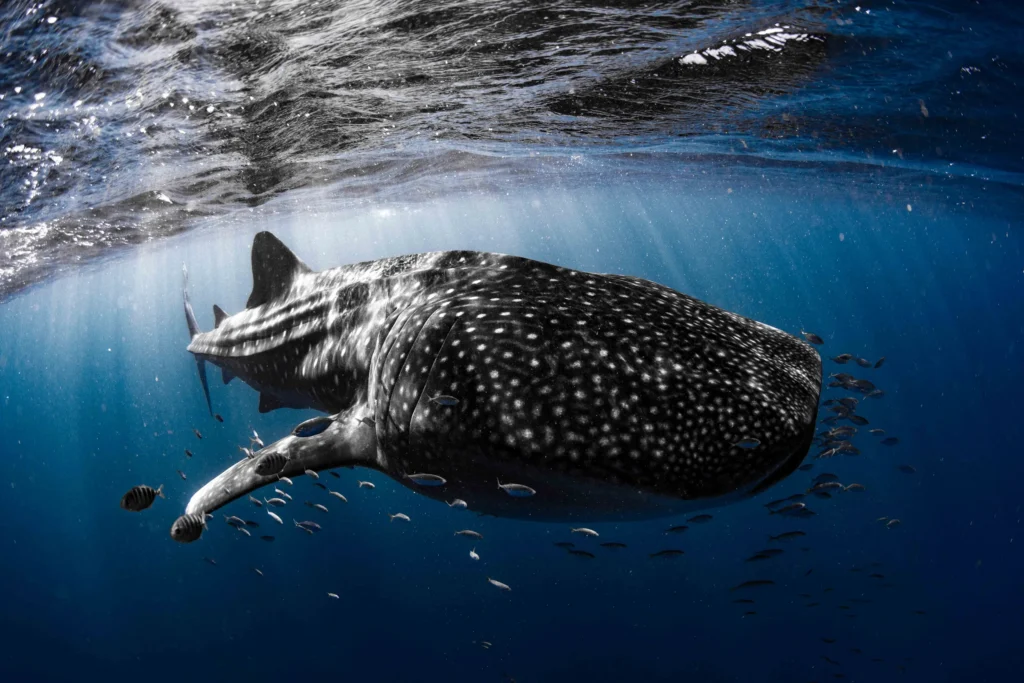
Day 11: Turquoise Bay to Exmouth (1 Hour-ish)
We found it really helpful to break up the journey and give ourselves one more night in Exmouth before heading south. In general, we really loved Exmouth, and this gave us a chance to snorkel a few more times in Cape Range and enjoy one last pizza at the Whalebone Brewing Company.
Basically, this is your last ‘fun’ day before you have to spend a few long days driving back to Perth. If you really wanted to break up the drive to Perth even more, you could drive further than Exmouth and camp around Minilya tonight.
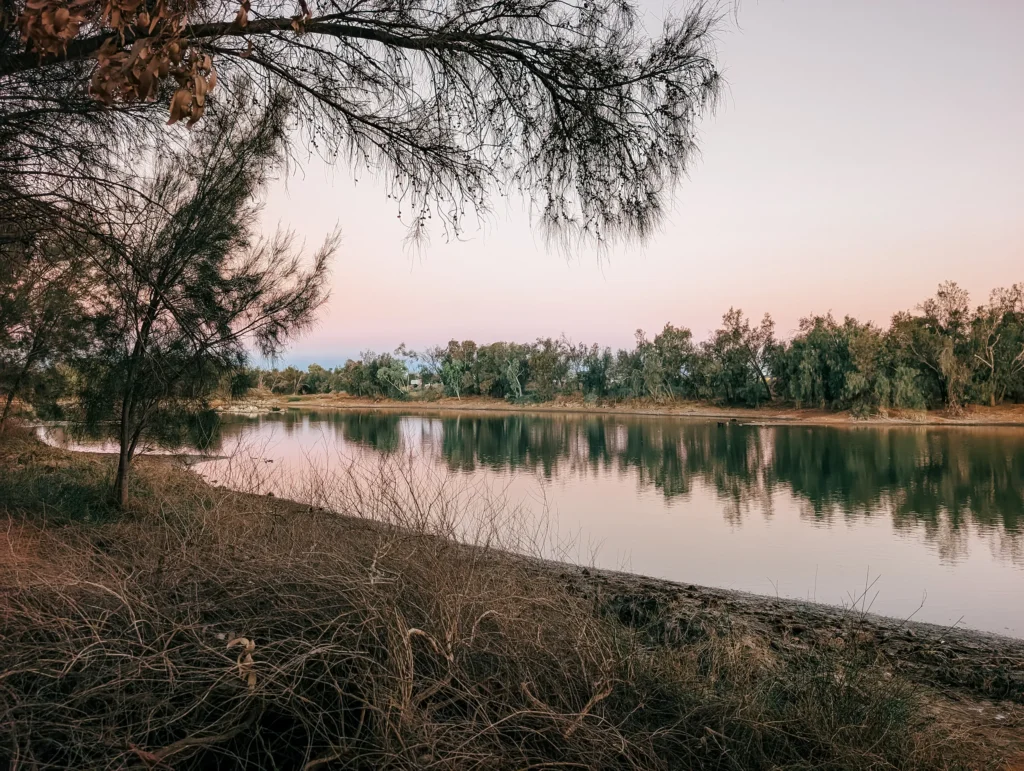
Day 12: Exmouth to Galena Bridge (7 hours)
The next two days are long driving days, but they’ll be broken up with some really nice (free) spots to camp! We actually loved Galena Bridge, which is why we wanted to camp here a second time on the way back down. It’s otherwise a long drive, so make sure to start early to avoid driving around at dusk.
On these long driving days, it’s so important to get to your campsite before the sun goes down.
Sleep at the Galena Bridge Rest Area (right along the river! It’s beautiful!)
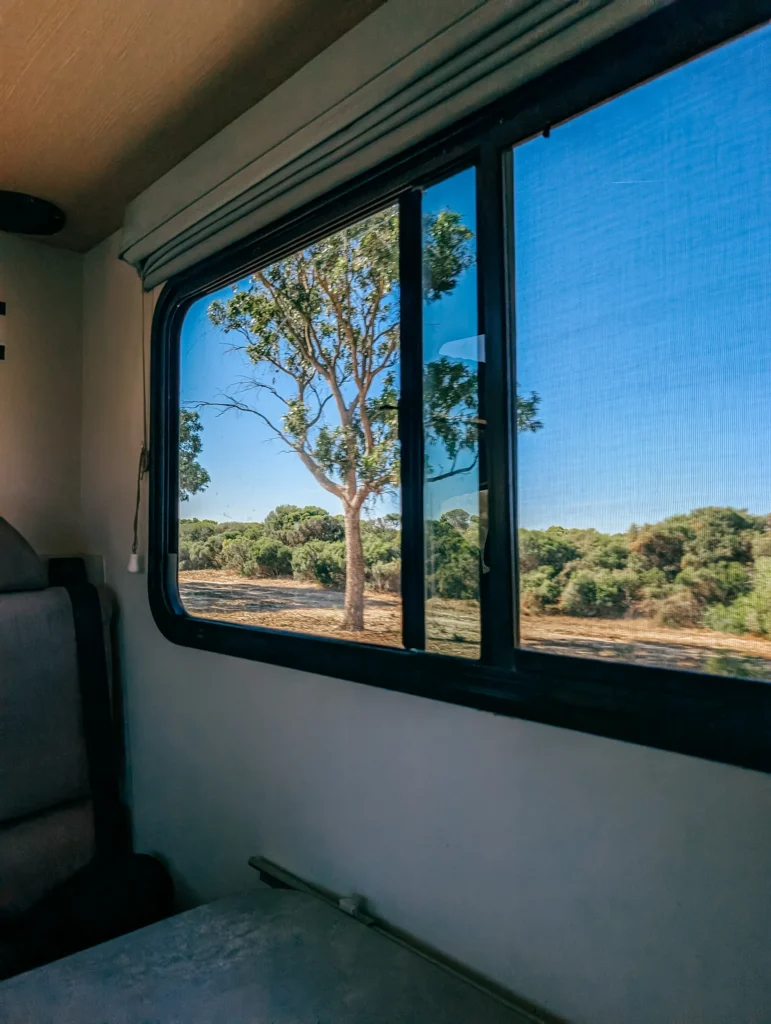
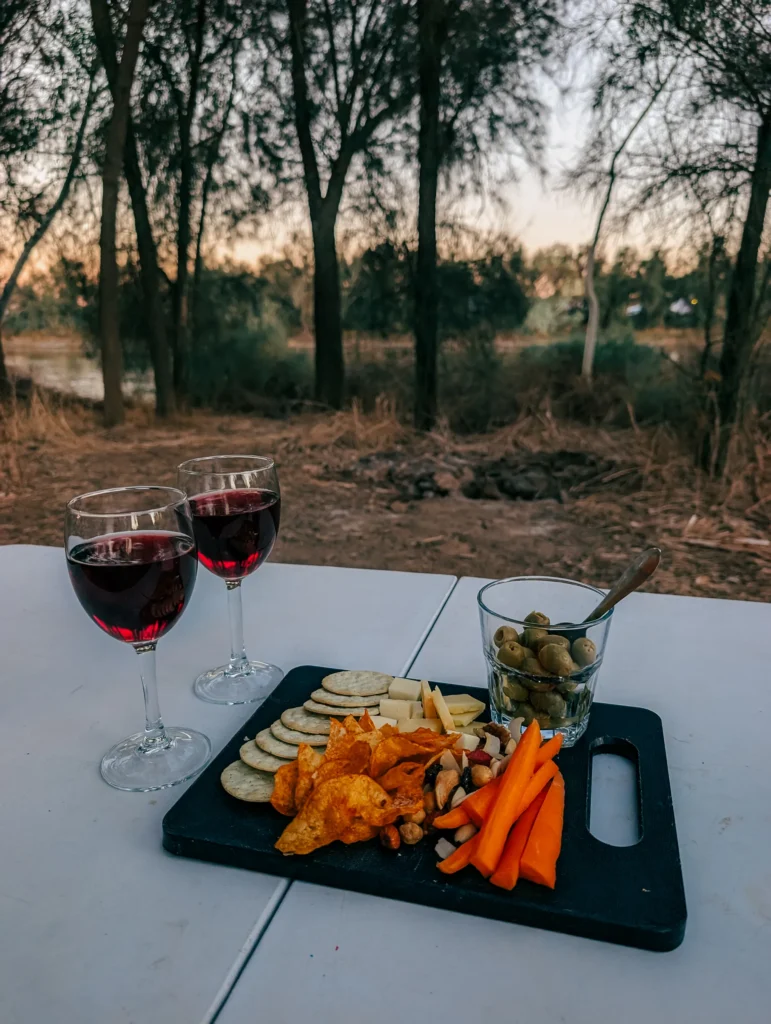
Day 13: Galena Bridge to Wannamal (5 Hours)
Instead of taking the coastal road all the way back to Perth, we planned this last day around where we could sleep, which would help us get to the airport fairly quickly! That led us to Wannamal, where there was an amazing donation-based camp that would drop us into Northern Perth (around the airport) in under two hours.
If you camp at Galena Bridge, the drive today will be approximately 5 hours. However, from here, you should be able to easily and quickly return to Perth to conclude your trip.
The last few days of your adventure might look slightly different from ours, depending on how long you want to take driving back down to Perth and what time your flight is. We had to be in Perth around 9:00 AM on our final day, so picking a camp spot that benefitted that schedule was our top priority.
Sleep at the Wannamal Camp Area.
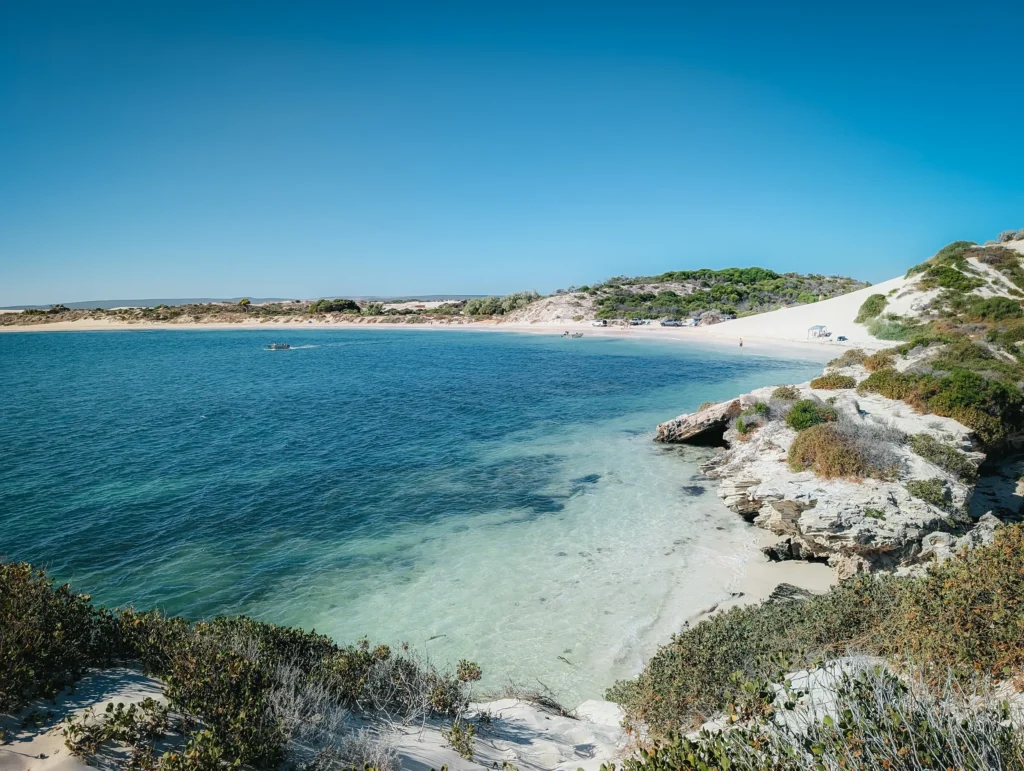
Day 14: Fly Home (Around 1 Hour)
Our final day looked like an early wake-up call, a morning spent cleaning up the campervan and then an hour’s drive into Perth. We filled up with gas, returned the campervan, and then jumped on the train to the airport.
And just like that, our two-week road trip from Perth to Exmouth was over.
Western Australia will always hold a special place in my heart! It was my first experience seeing whale sharks; every sunset was incredible, and I had entire beaches to myself. Western Australia is truly home to some of the best beaches in the world as well.
This road trip was magical! And if anything, too short. We already can’t wait to go back with a four-wheel drive and explore even more of this part of the world.
If you’re planning your own Western Australia road trip, keep reading because I’m going to share some lessons learned, booking tips, and favorite foods!
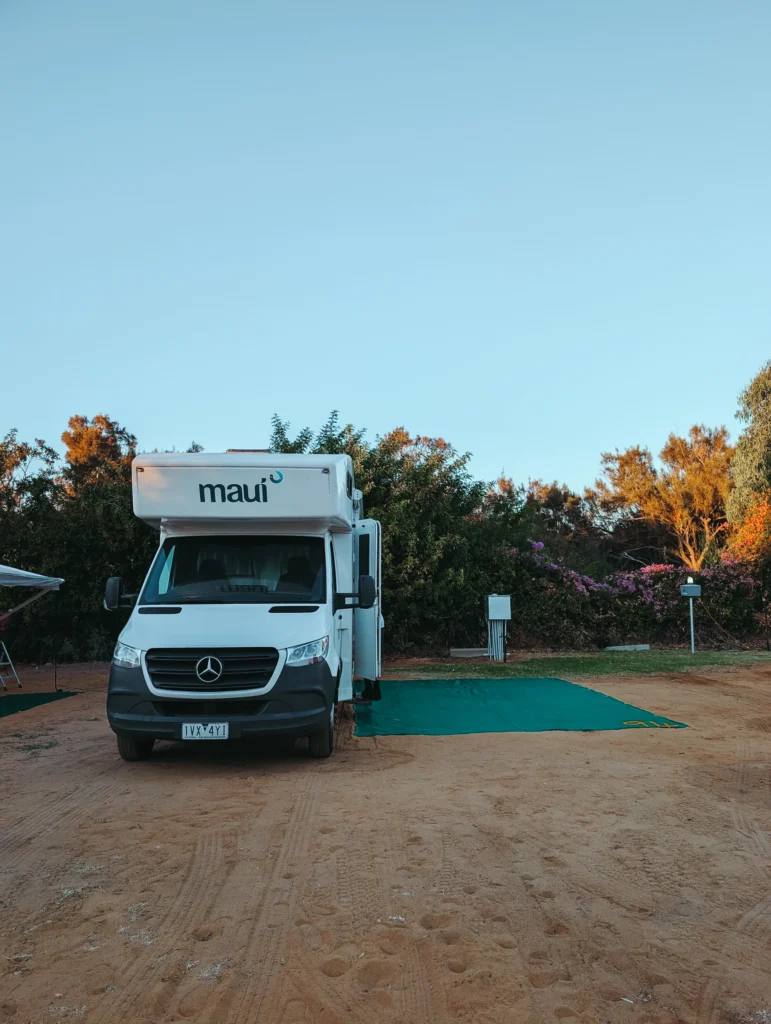
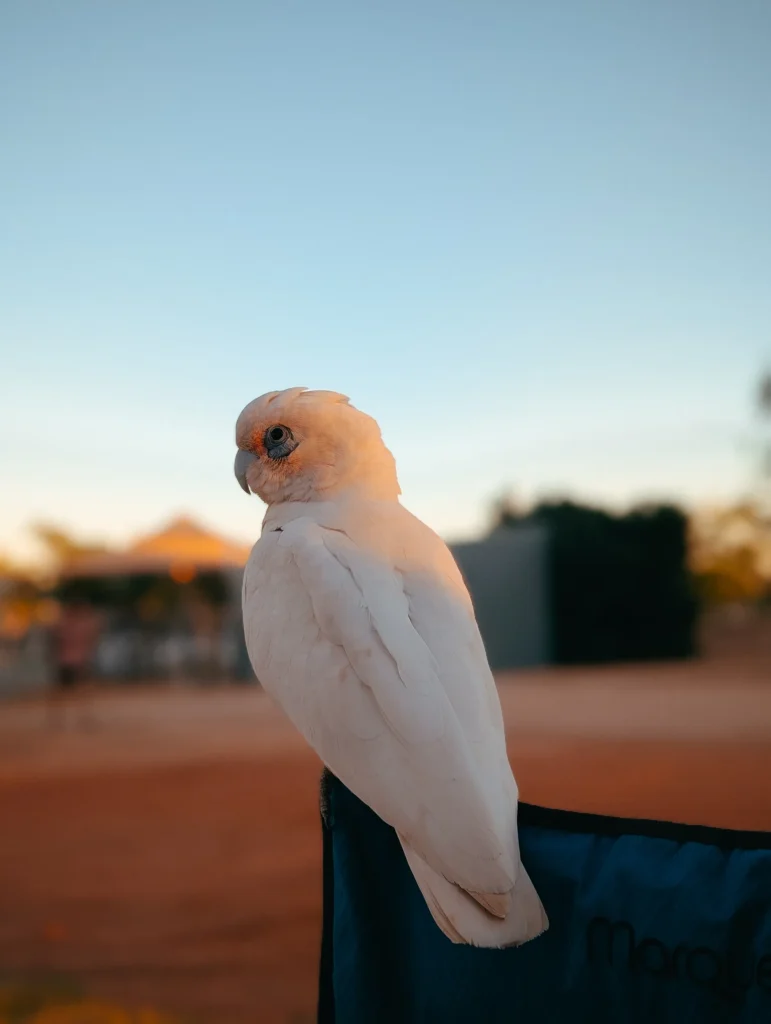
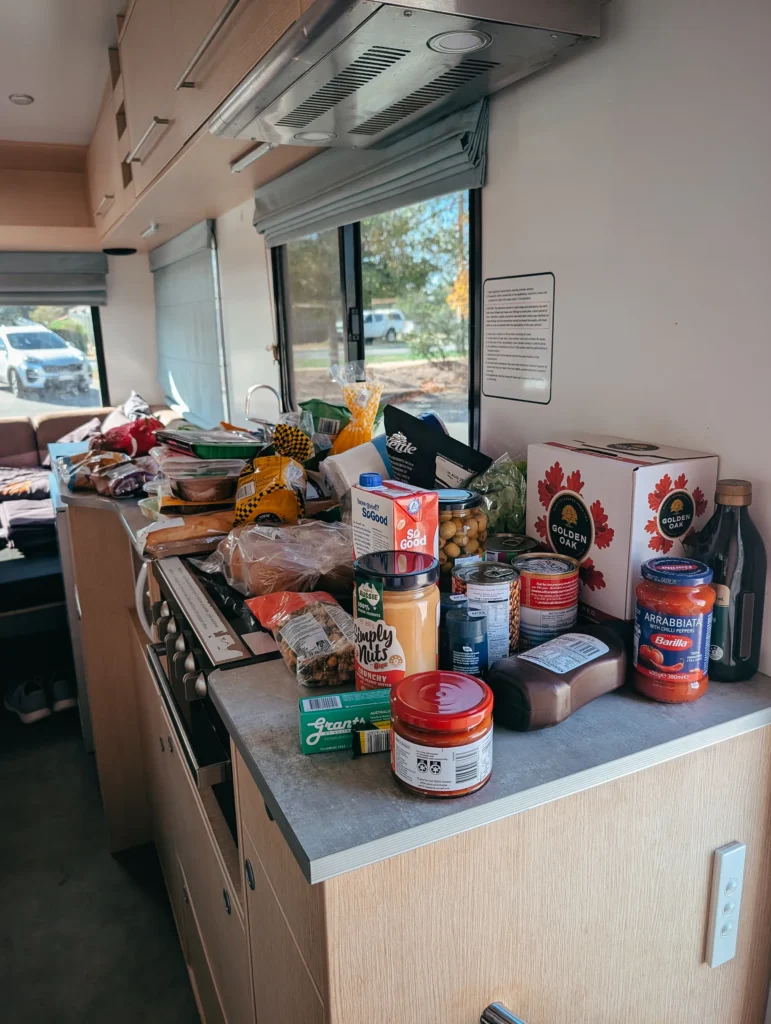
Campervan Rental FAQs
1. Do I need a special license to drive a campervan in Australia?
Nope! If your regular driver’s license is in English and valid, you can drive a campervan under 4.5 tonnes. If it’s not in English, you’ll need an International Driving Permit (IDP) alongside your original license.
2. Is it cheaper to rent a campervan or stay in hotels?
It depends on your travel style. Campervans often save you money on accommodation and cooking, but fuel can be pricey in remote parts of WA. If you love flexibility and the outdoors, it’s worth it.

3. Can I camp anywhere in Western Australia?
Not quite. Free camping is allowed in some areas but strictly prohibited in others. Look for official rest stops, free campsites, or low-cost national park campgrounds (apps like WikiCamps are a great resource for this).
4. Are there powered sites and showers along the way?
Yes. Caravan parks and many campsites offer powered sites, hot showers, and sometimes even laundry. It’s worth booking ahead in popular spots (especially in Cape Range National Park, where campgrounds are small).
5. Do I need to book my campervan in advance?
100% yes—especially in peak season (April to October in WA). Last-minute deals do exist, but if you’re set on specific dates or routes, it’s best to book early. We made the mistake of ‘winging it’ too much and missed out on staying in some amazing places.
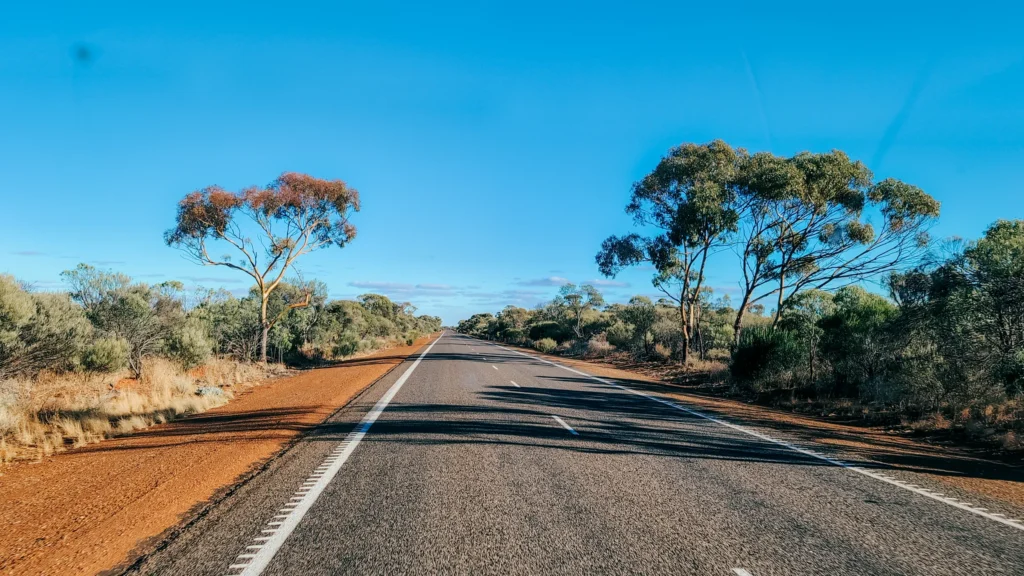
6. Is it easy to drive a campervan in Australia?
Generally, yes, but distances in WA are massive, and the roads can get remote fast. Drive during daylight, watch for wildlife (especially at dawn/dusk), and fuel up whenever you can.
7. What size campervan should I rent?
Think about your comfort level. Smaller vans are easier to drive and more fuel-efficient. Still, larger vans offer additional amenities such as showers, toilets, and more space, which is great if you’re traveling as a couple or group.
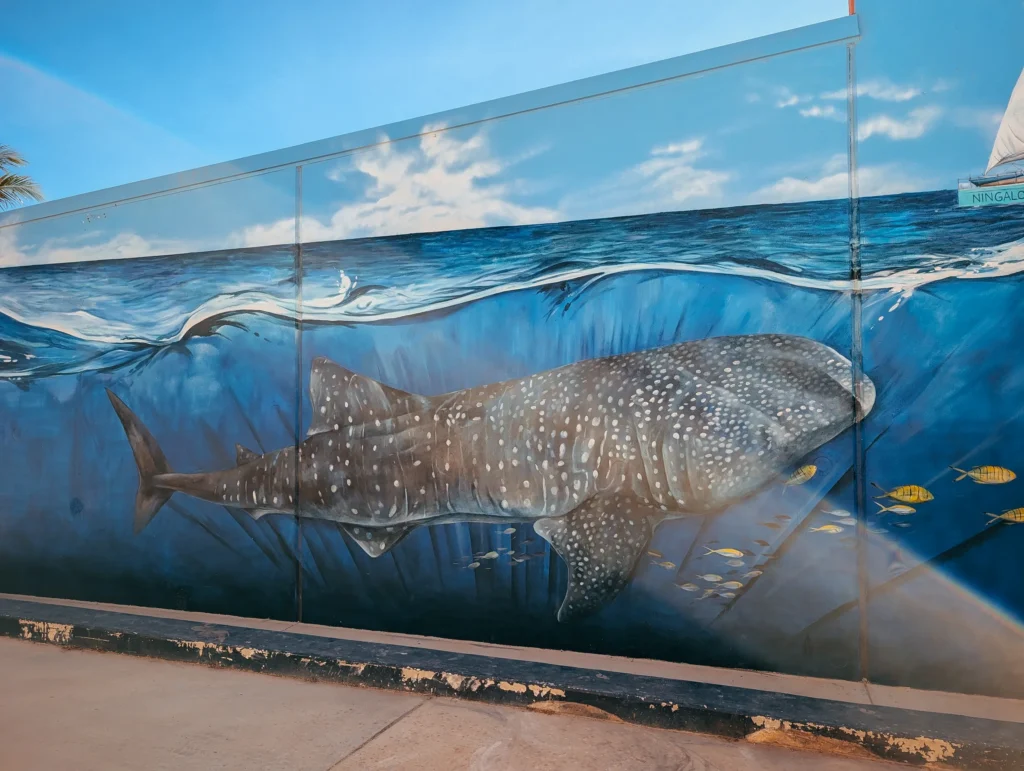
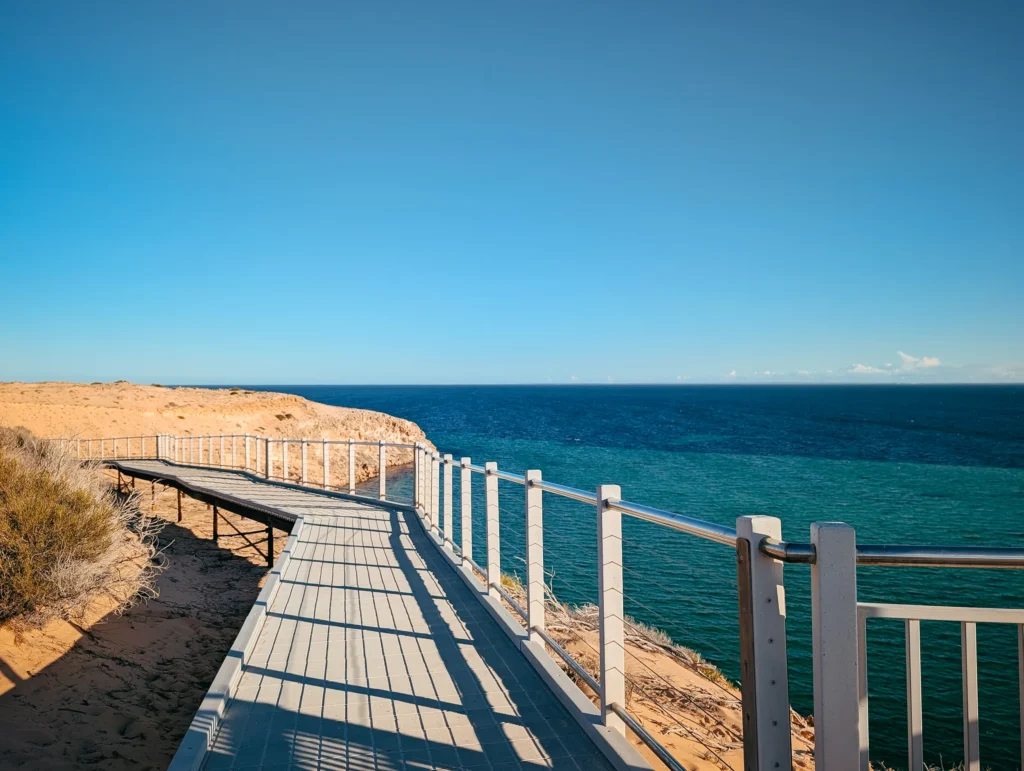
8. What should I pack for a campervan trip?
Essentials include reef-safe sunscreen, insect repellent, headlamps, camp chairs, a reliable offline map app (such as Maps.me), USB chargers, and plenty of drinking water. And learn from my mistakes! Buy a bug net!
9. Can I take my campervan off-road?
Only if it’s a 4WD camper, and most rentals aren’t. Always check the terms of your rental agreement; going off-road in a 2WD could void your insurance.
10. What about toilets and waste disposal?
Some vans have toilets, some don’t. If yours does, you’ll need to empty the waste at dump points (found in most caravan parks). Otherwise, use public facilities or campsites with amenities.
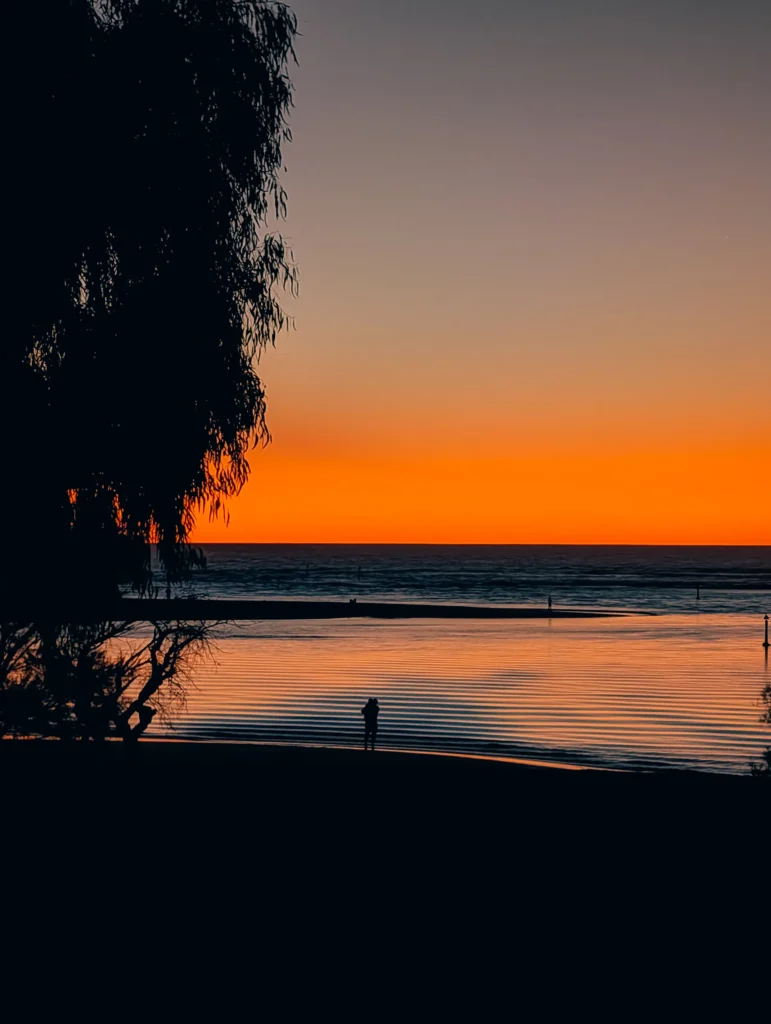
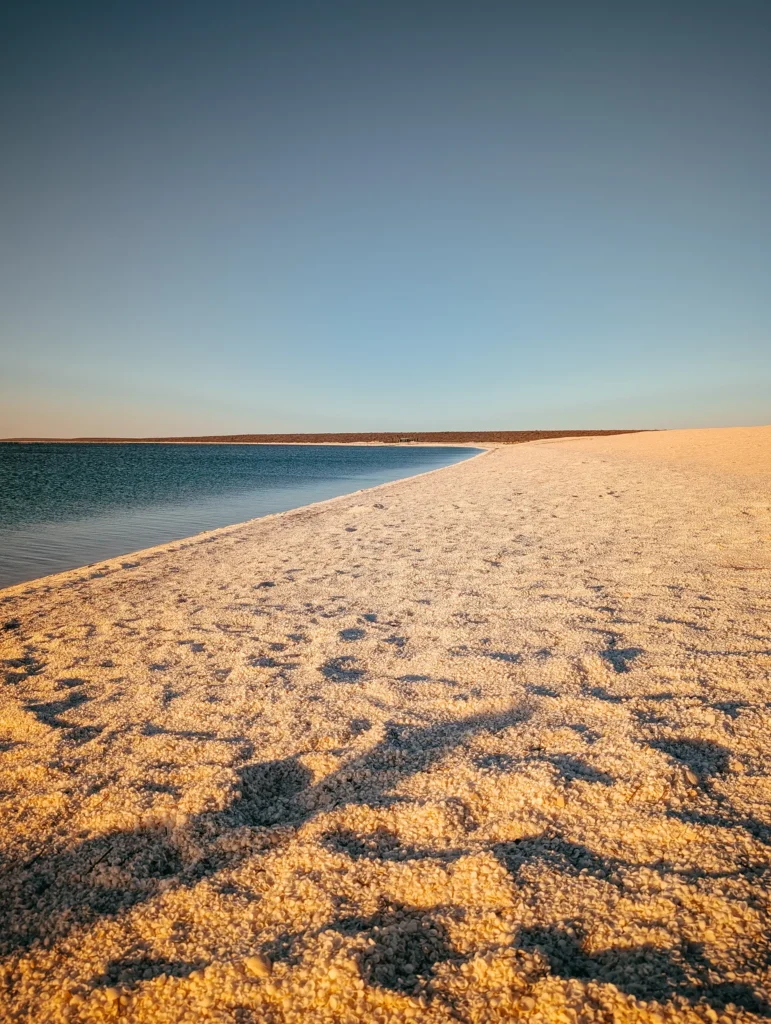
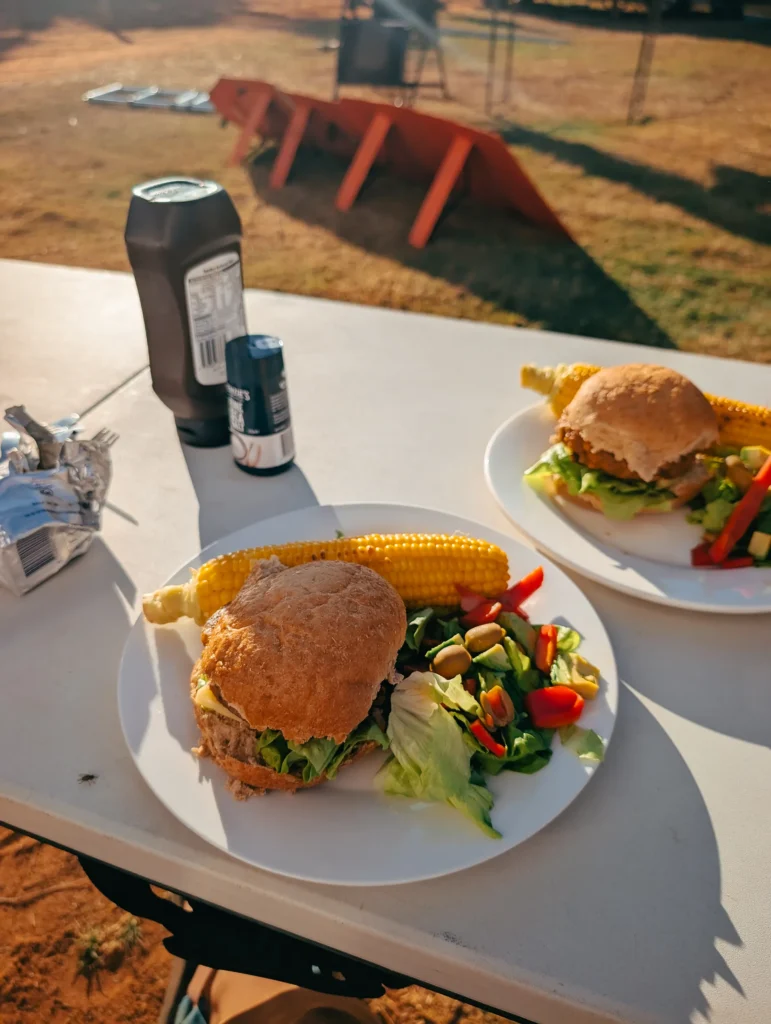
My Top Tips for Your Western Australia Road Trip
1. Bring a bug net
The flies in Western Australia are out for blood. During all of our walks and hikes, we were constantly surrounded by these annoying little flies while the locals were worry-free with their bug nets. I highly recommend bringing one or picking one up at the start of your trip.
2. Book your campervan with Campstar
We booked our campervan with Campstar, and they made it easy to find the campervan that best suited our needs, with the best insurance at the best price. They compare prices across all the major brands around the world and offer sales of their own, which helps you save even more.
3. Stock up on essentials before going North
Groceries got more expensive the further North we went. So, I recommend buying your essentials before heading north. We did a big grocery shop before leaving Perth, and then we only had to buy our fresh food and treats along the way.
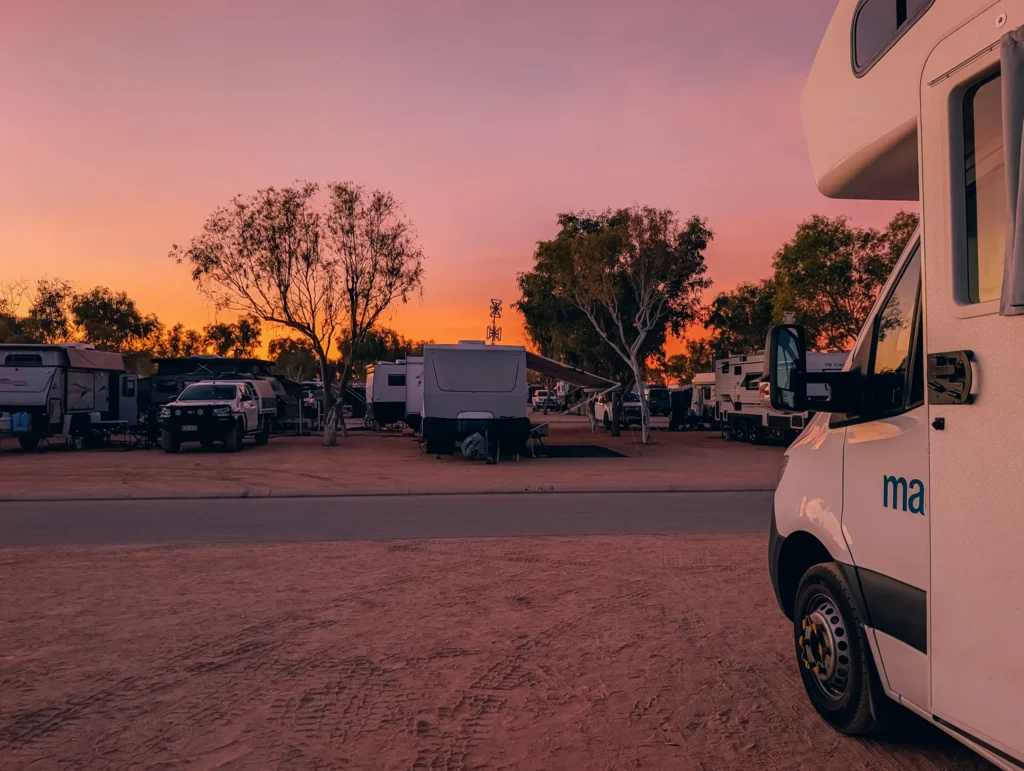
4. Book to stay at some campgrounds (and book them in advance!)
While in the US, our main goal was to avoid any paid campgrounds. This was different in Australia! I would actually recommend staying at some paid campgrounds in Australia. They were really nice and reasonably affordable. Plus, the paid campgrounds mean you’ll be way closer to the coast!
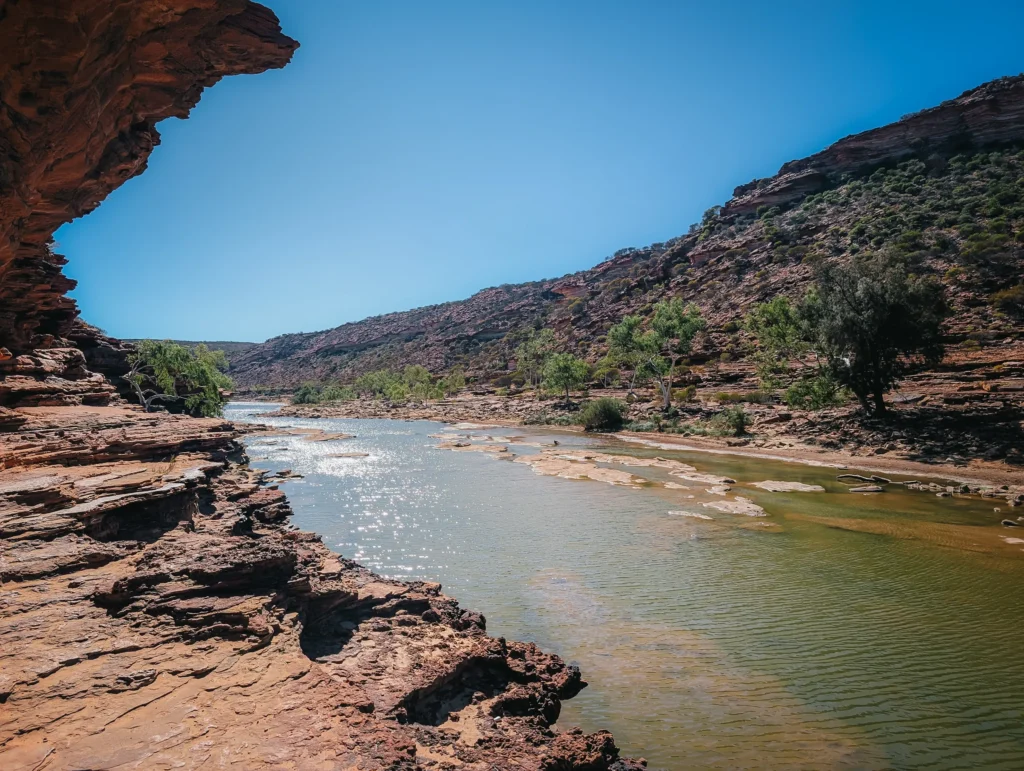
Is 2 weeks in Western Australia enough?
Absolutely not. A two-week Western Australia road trip is nowhere long enough! Australia is massive and absolutely beautiful. There are so many places that you could stop and explore along the way that this itinerary skipped.
While we only had two weeks for this trip, I would think that a four-wheel drive vehicle and a month would make for an even better adventure. Especially if you could make it further north to Broome (somewhere that’s very high on our bucket list).
However, if you’re short on time (like we were), you can really make the most of two weeks in Western Australia. You might just need to spend a few long days driving.
What questions do you have about planning your own road trip around Western Australia? Let me know in the comments below.
Love this travel guide? Much like a cup of coffee, I pour my heart and soul into each post! Say thank you by buying me a cup of coffee. Support this blog and keep it ad-free.
To see where I am in the world, follow me on Instagram and TikTok.
Read next: 7 Underrated National Parks to Add to Your U.S. Bucket List
